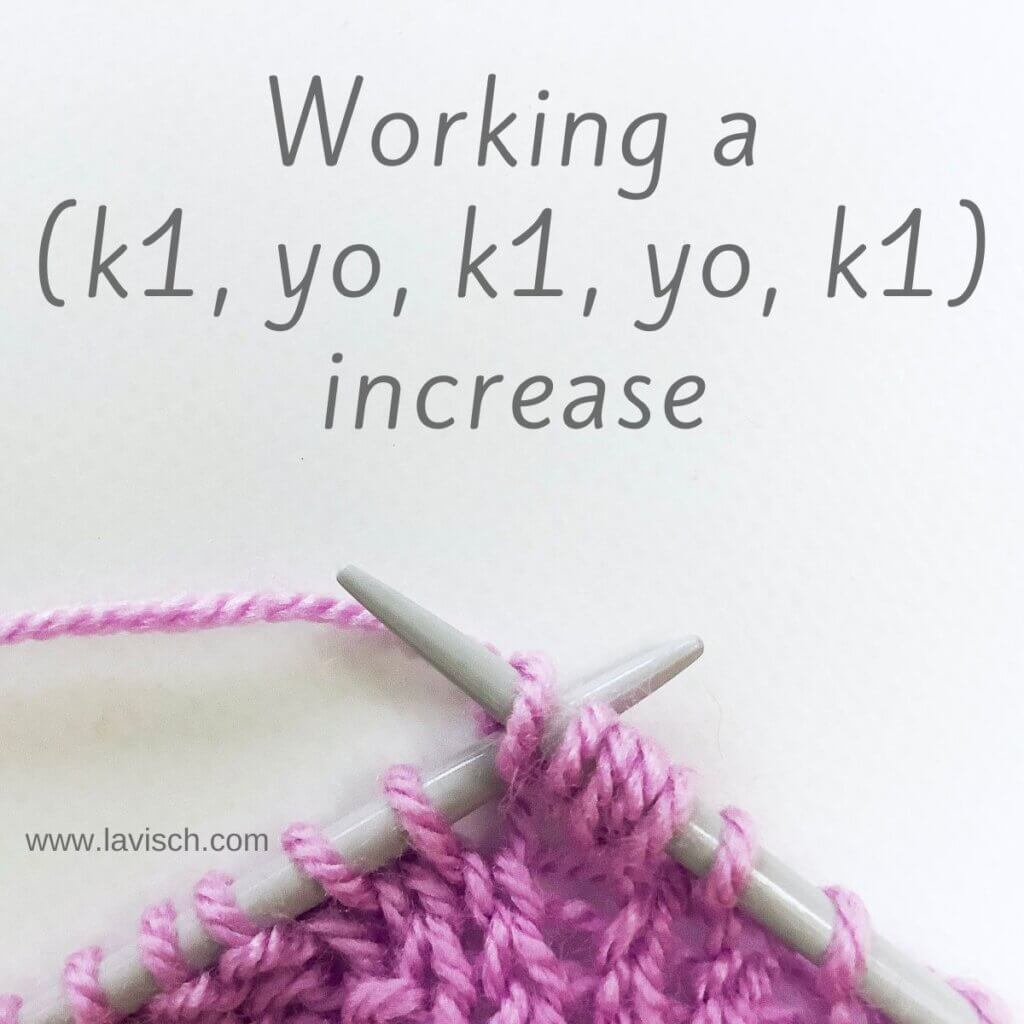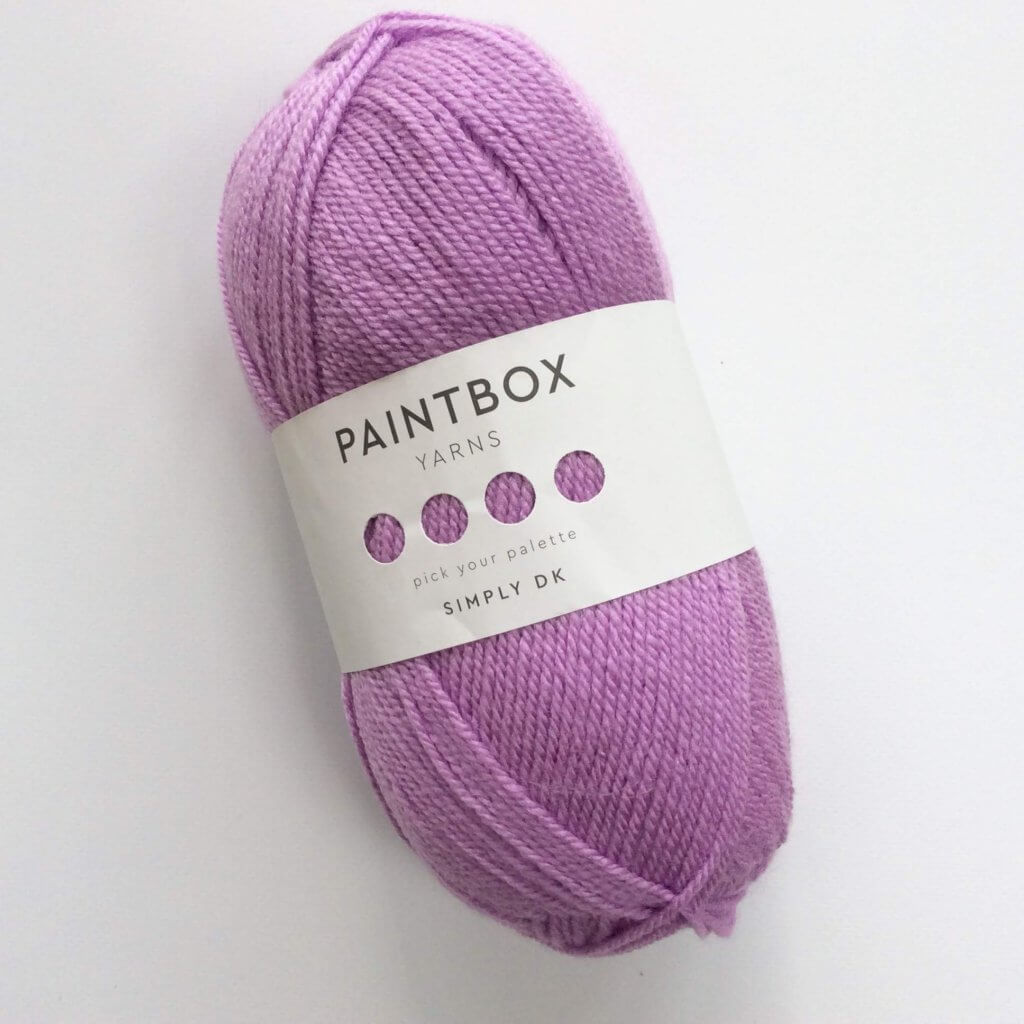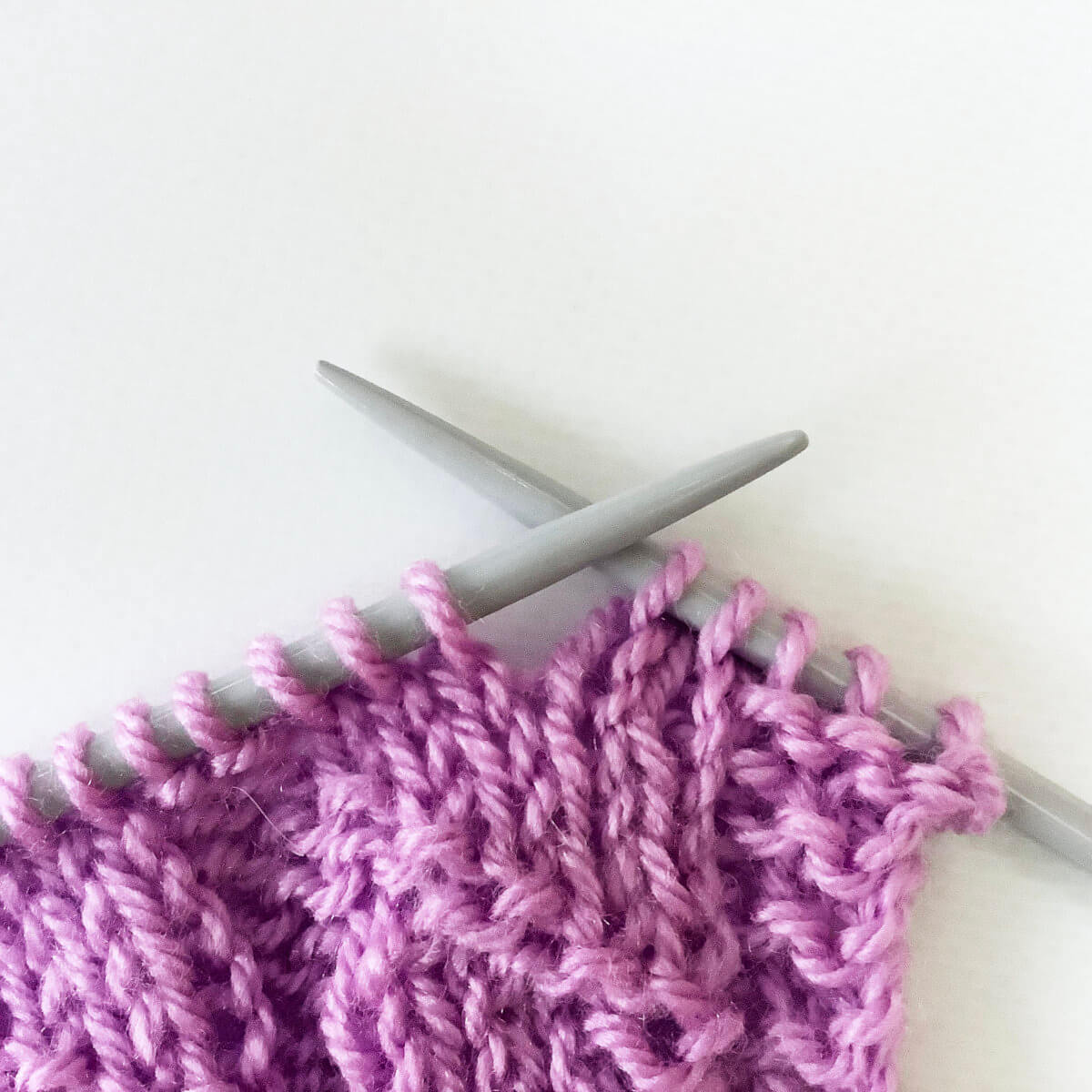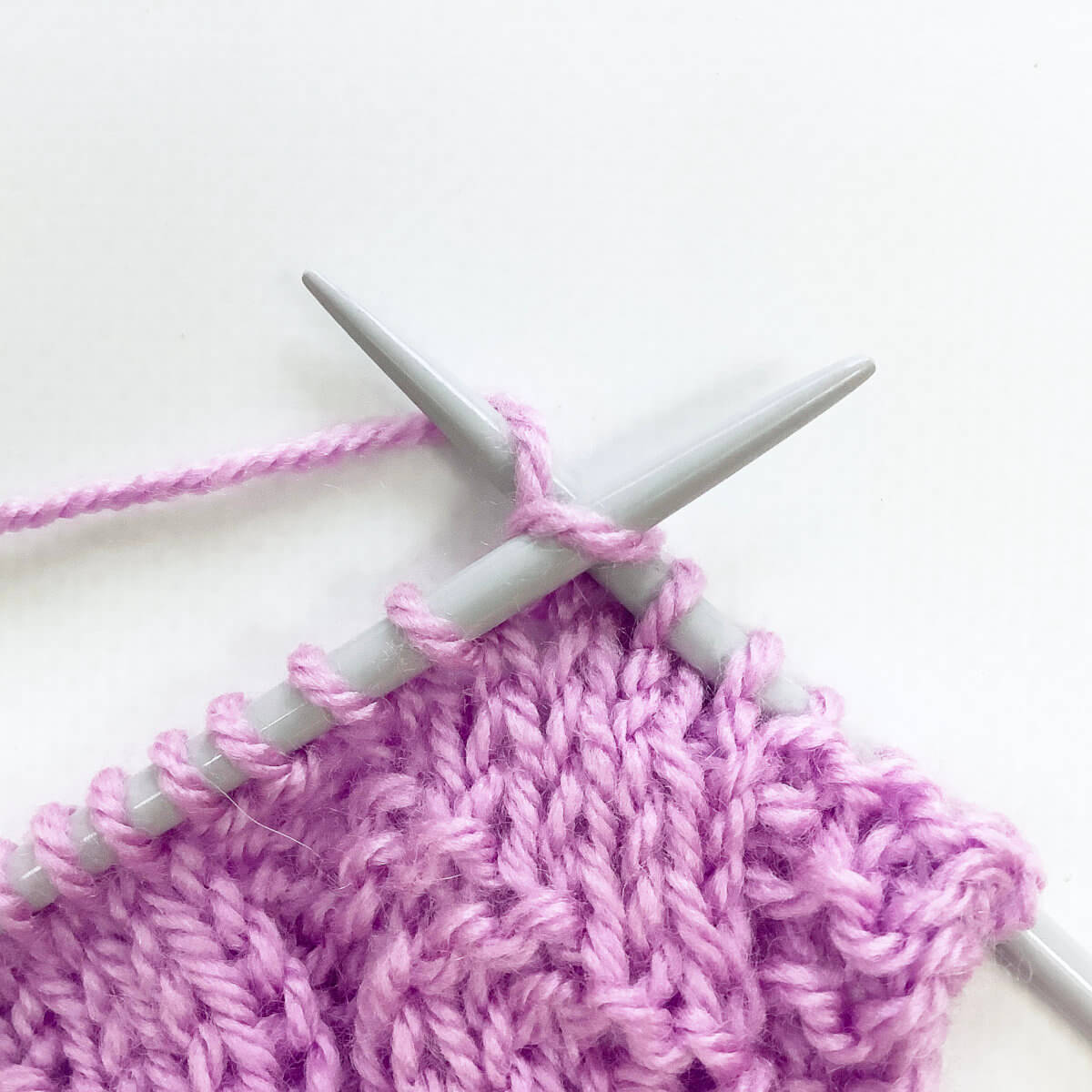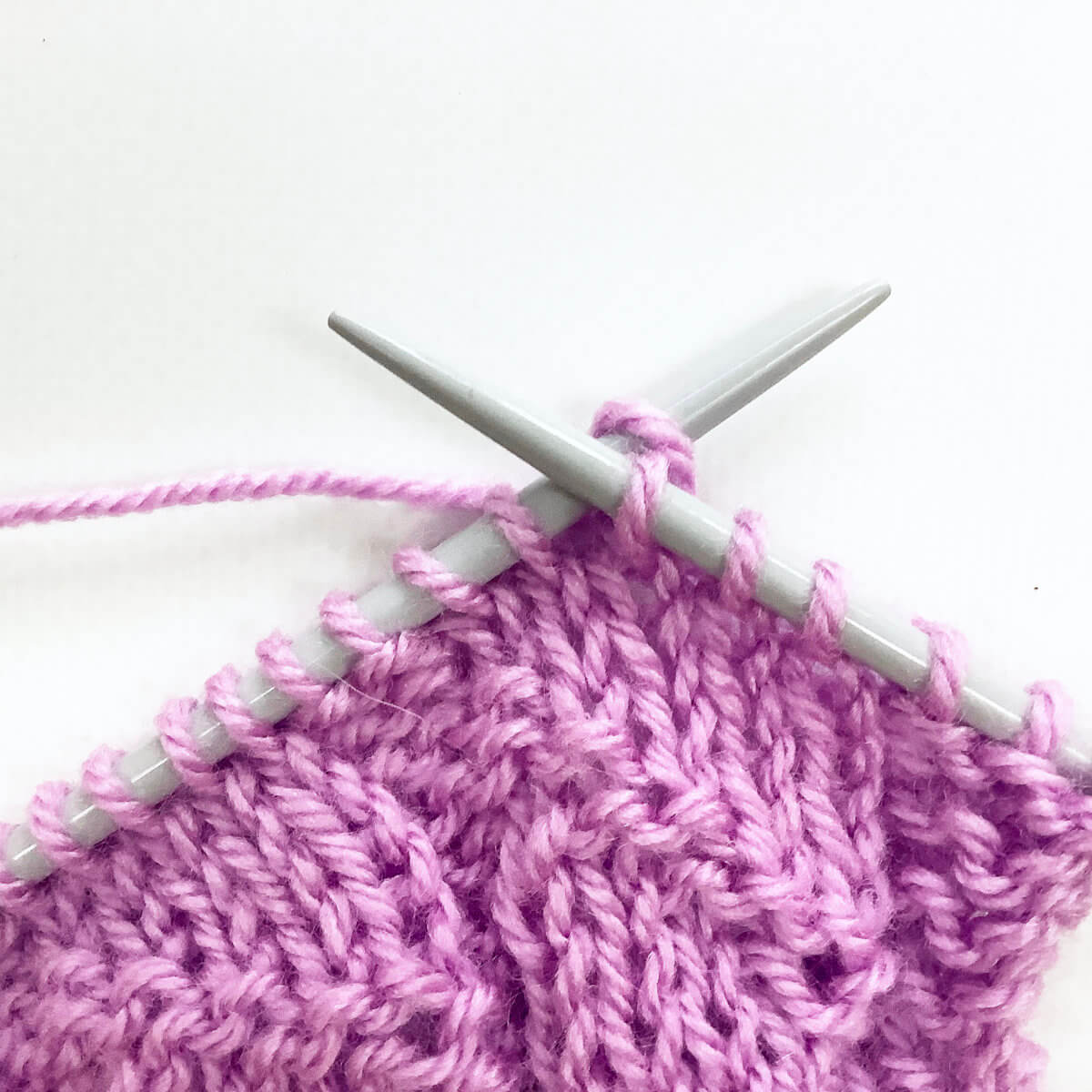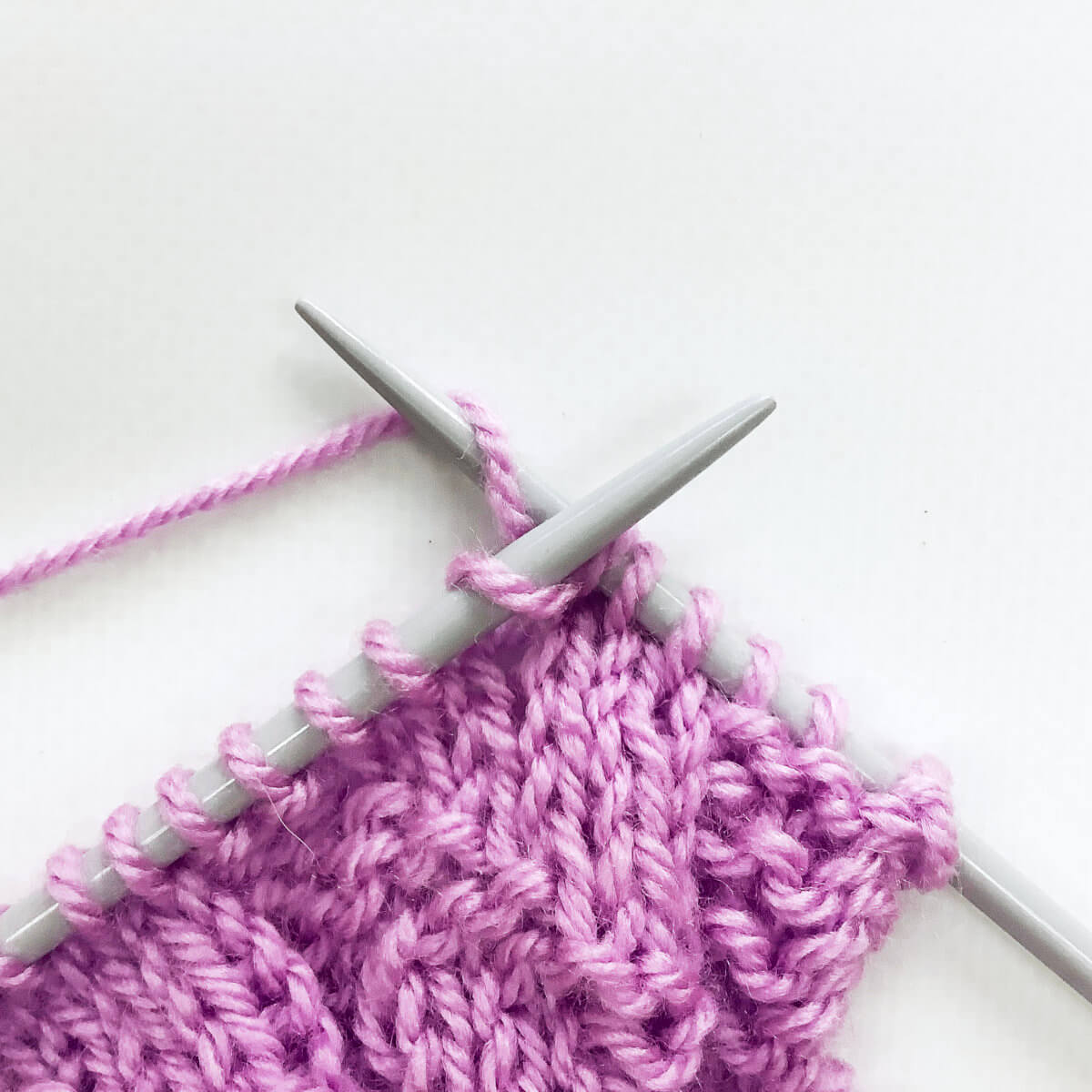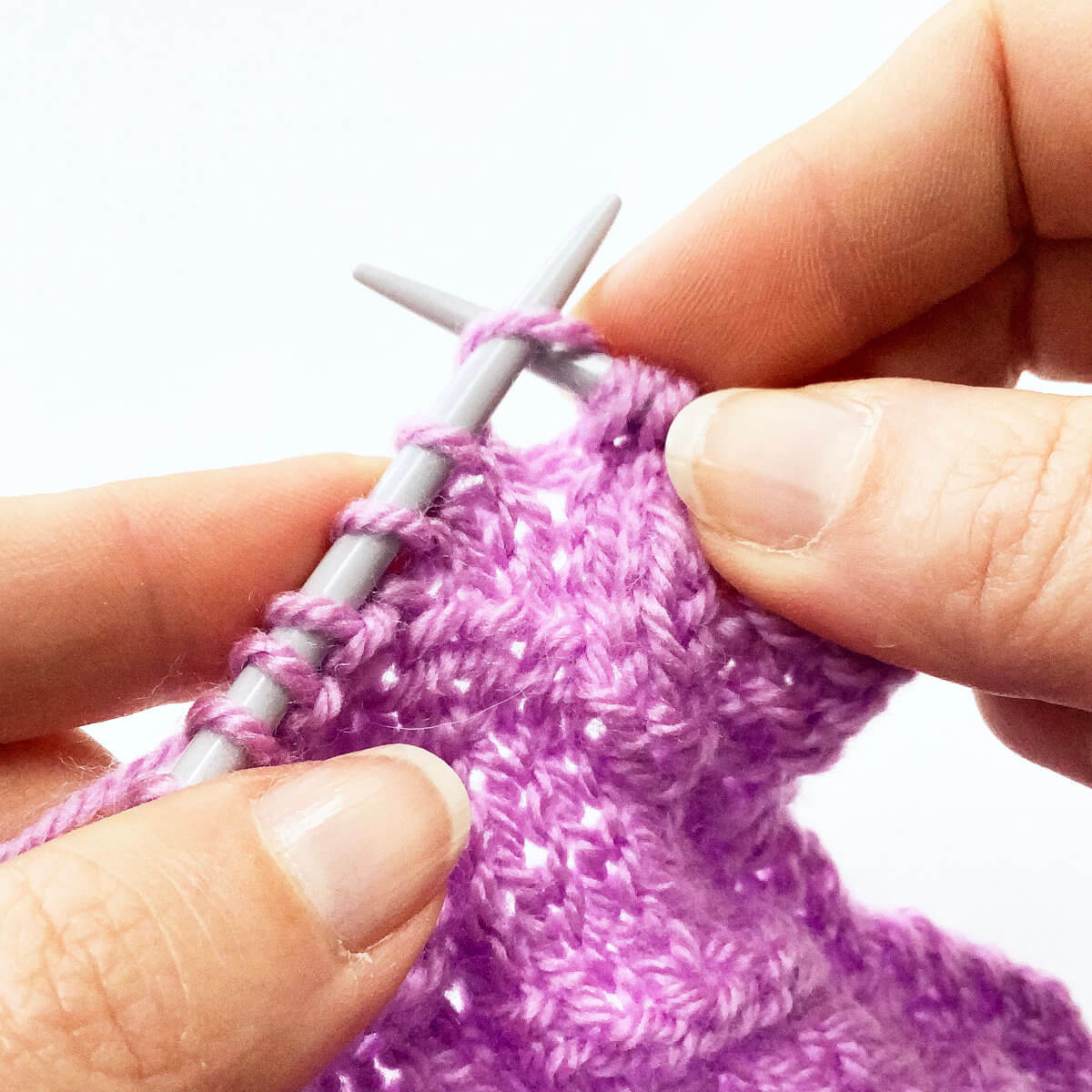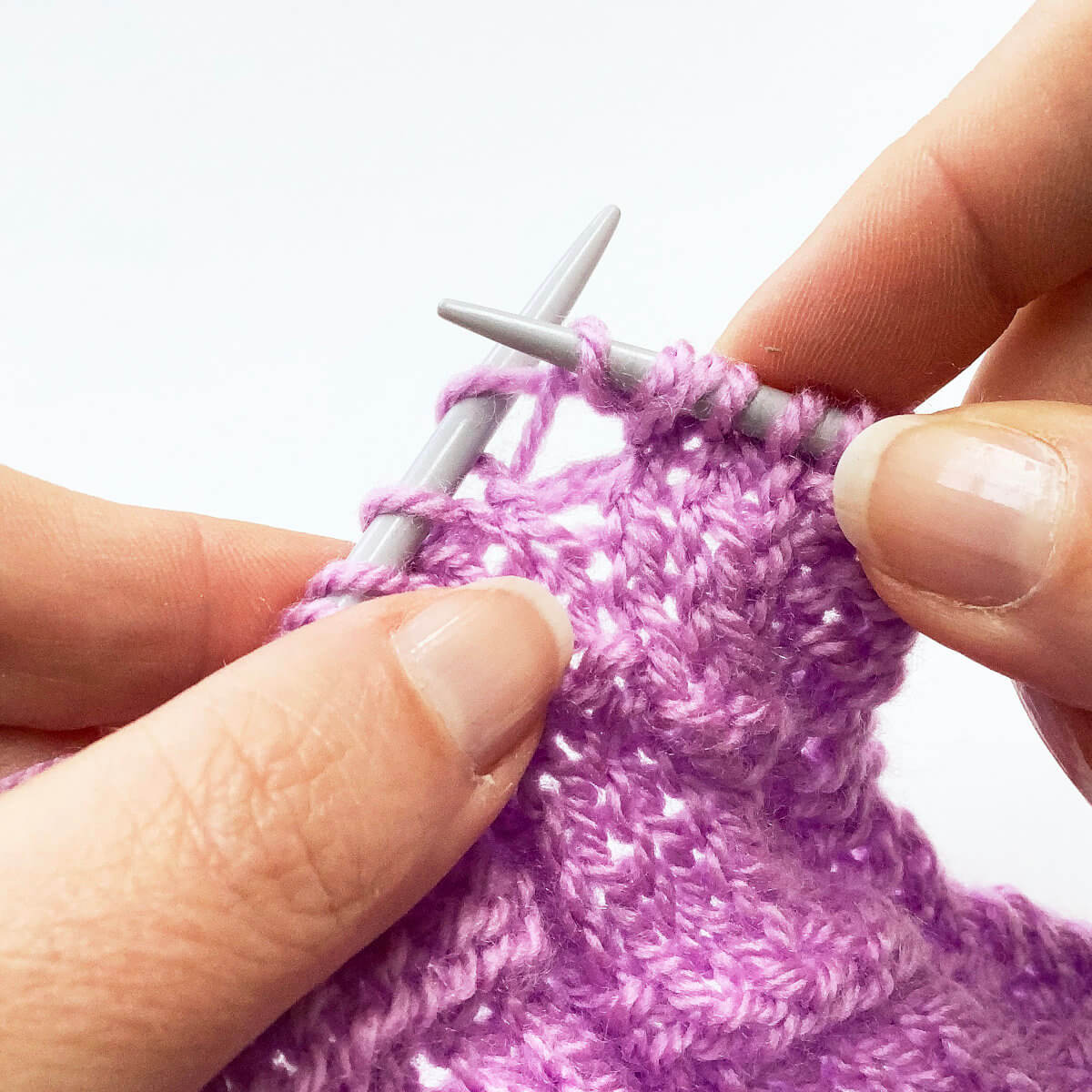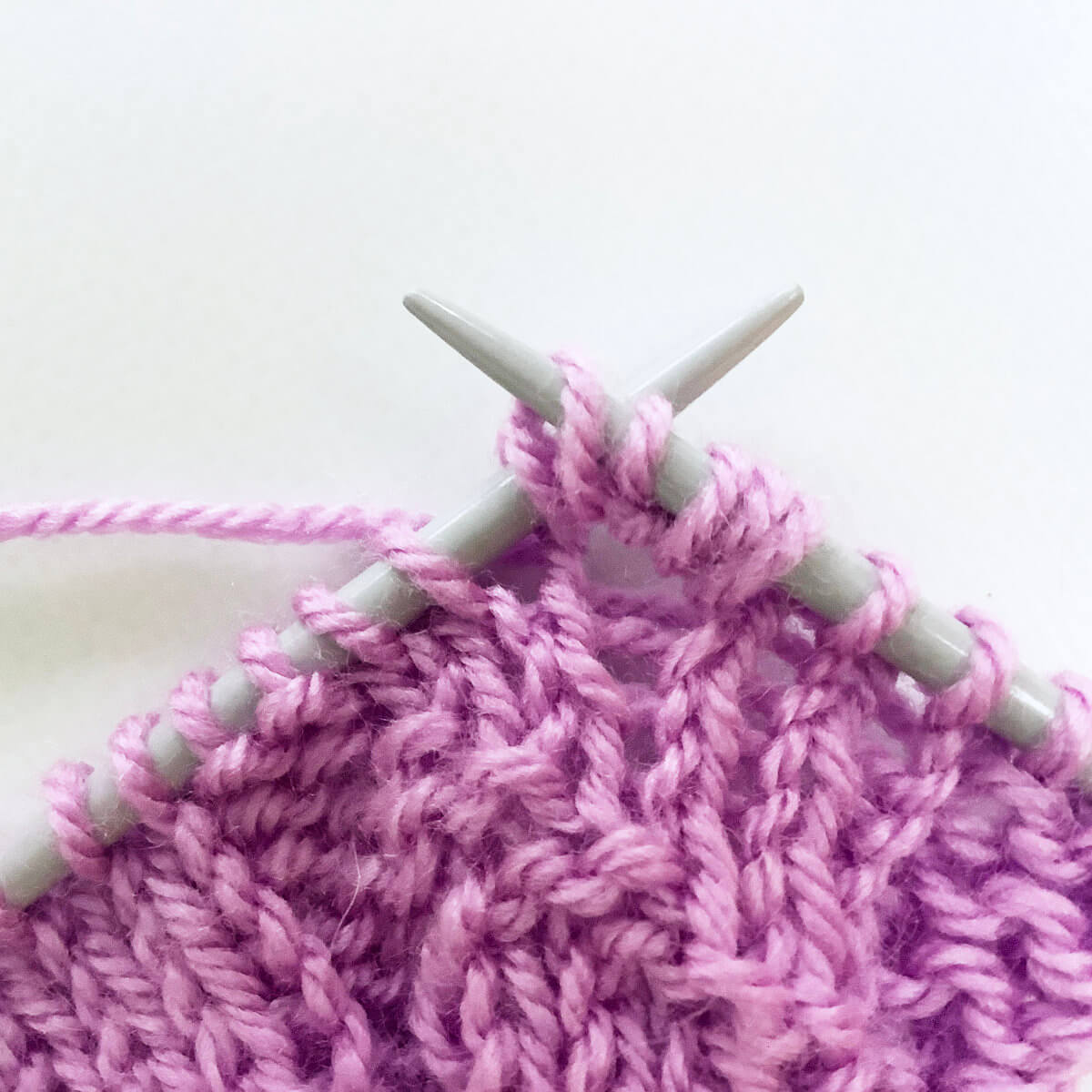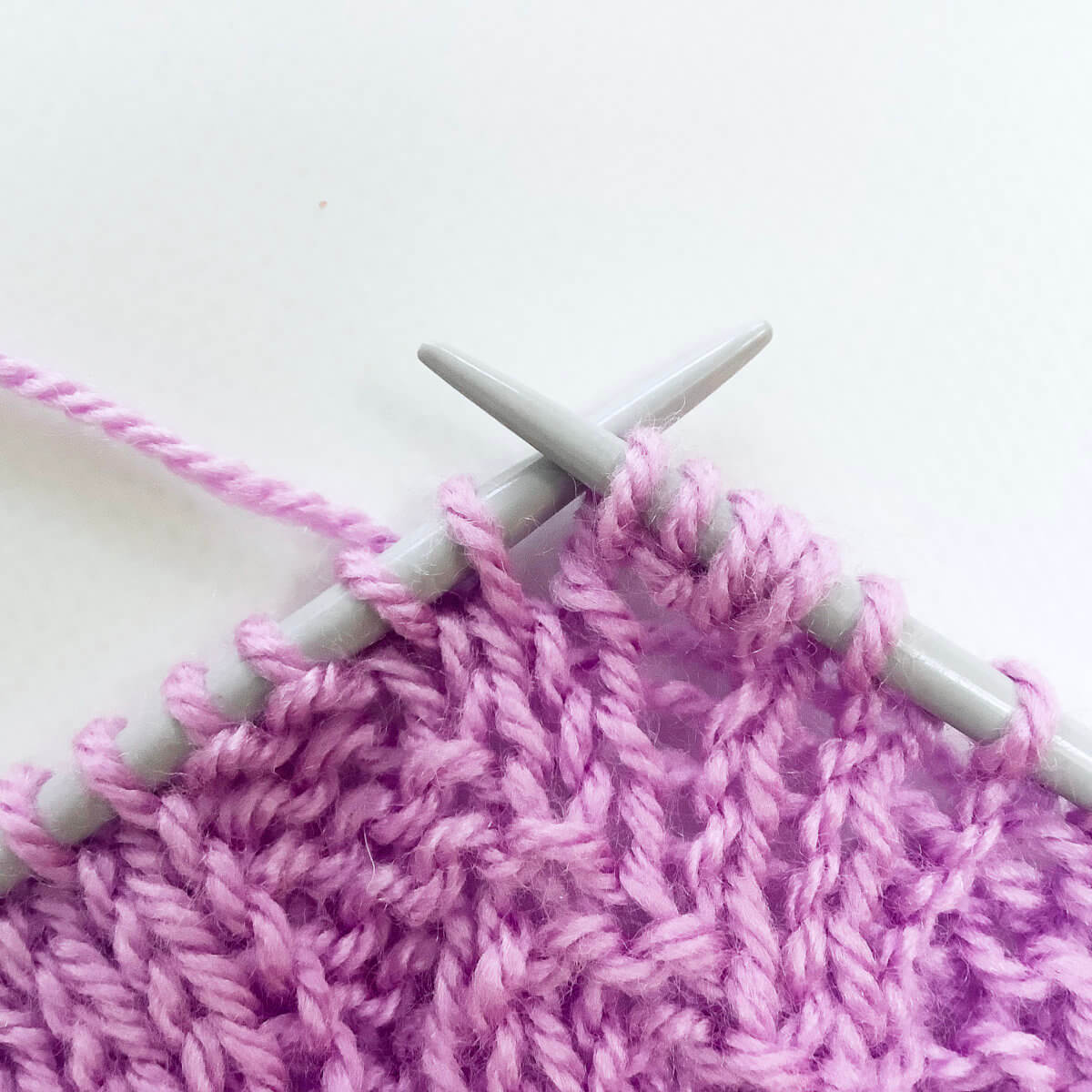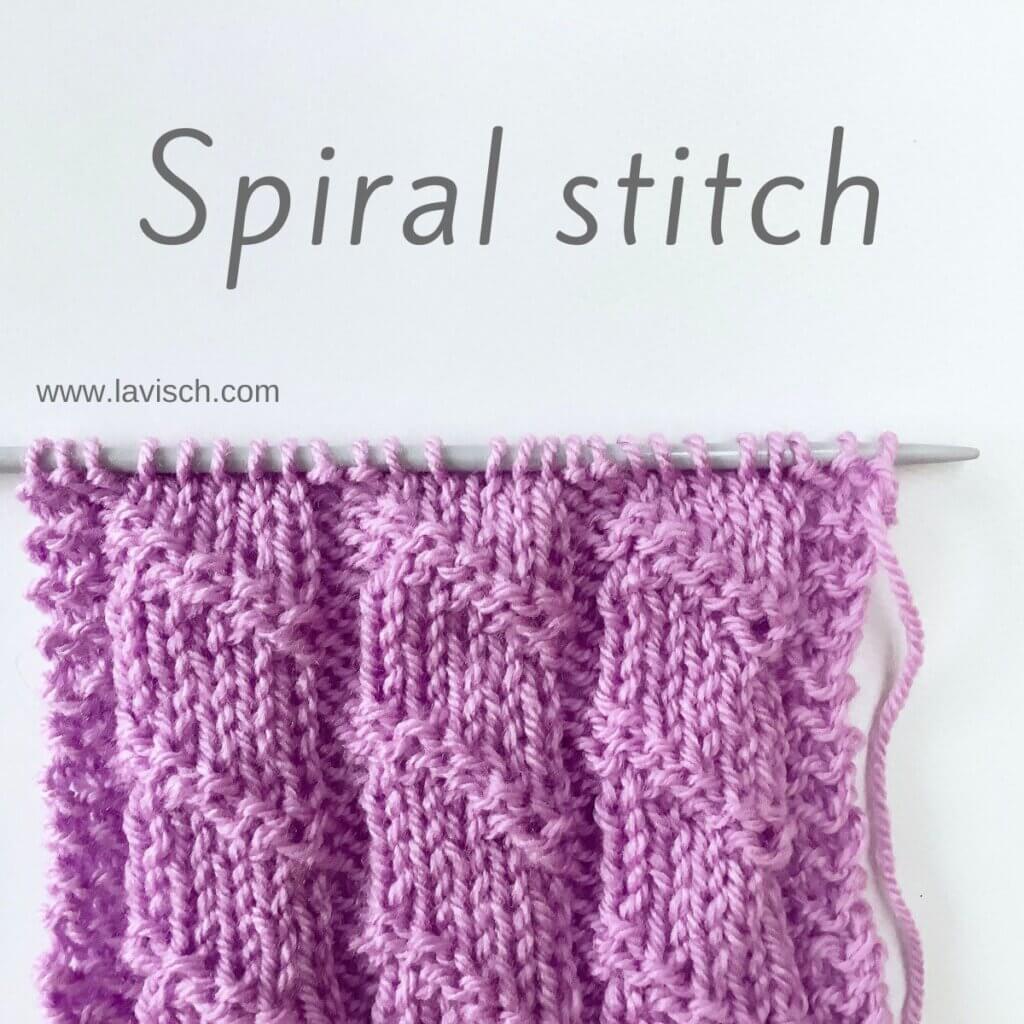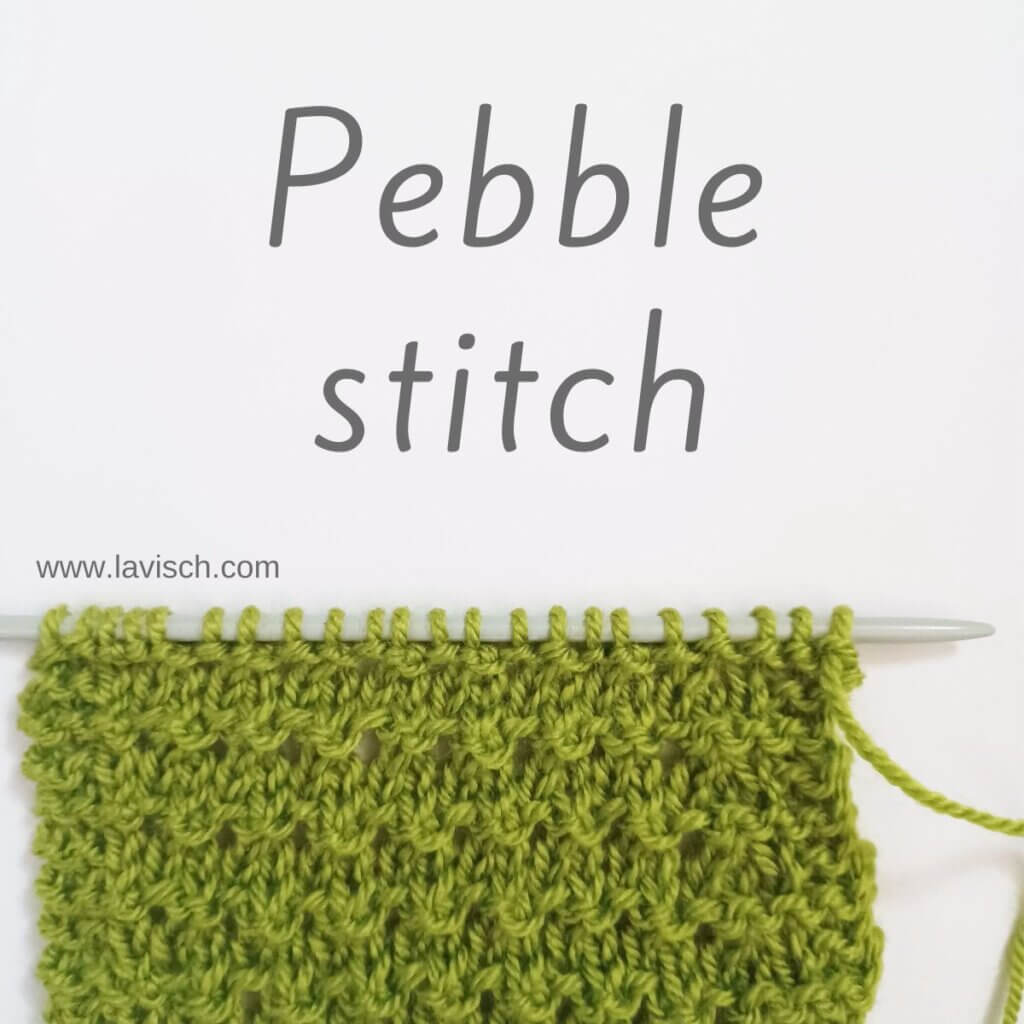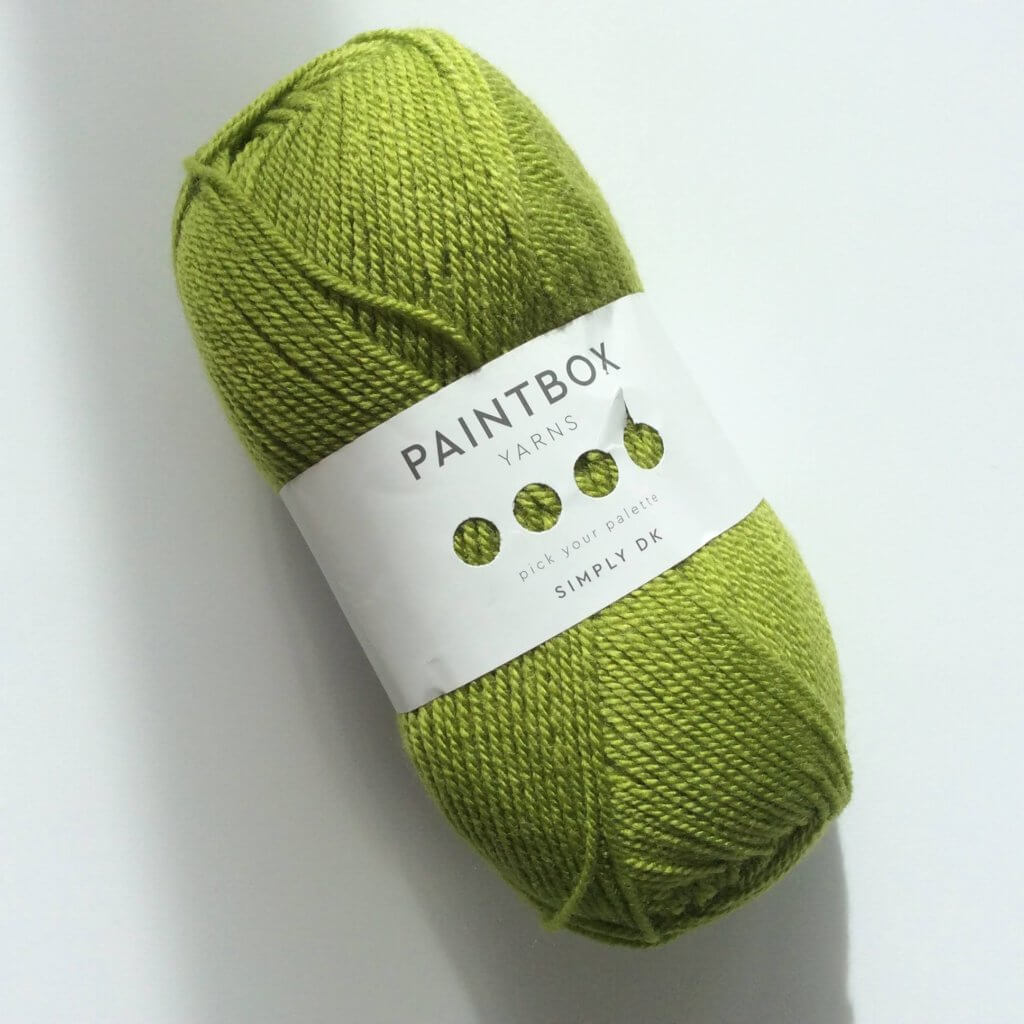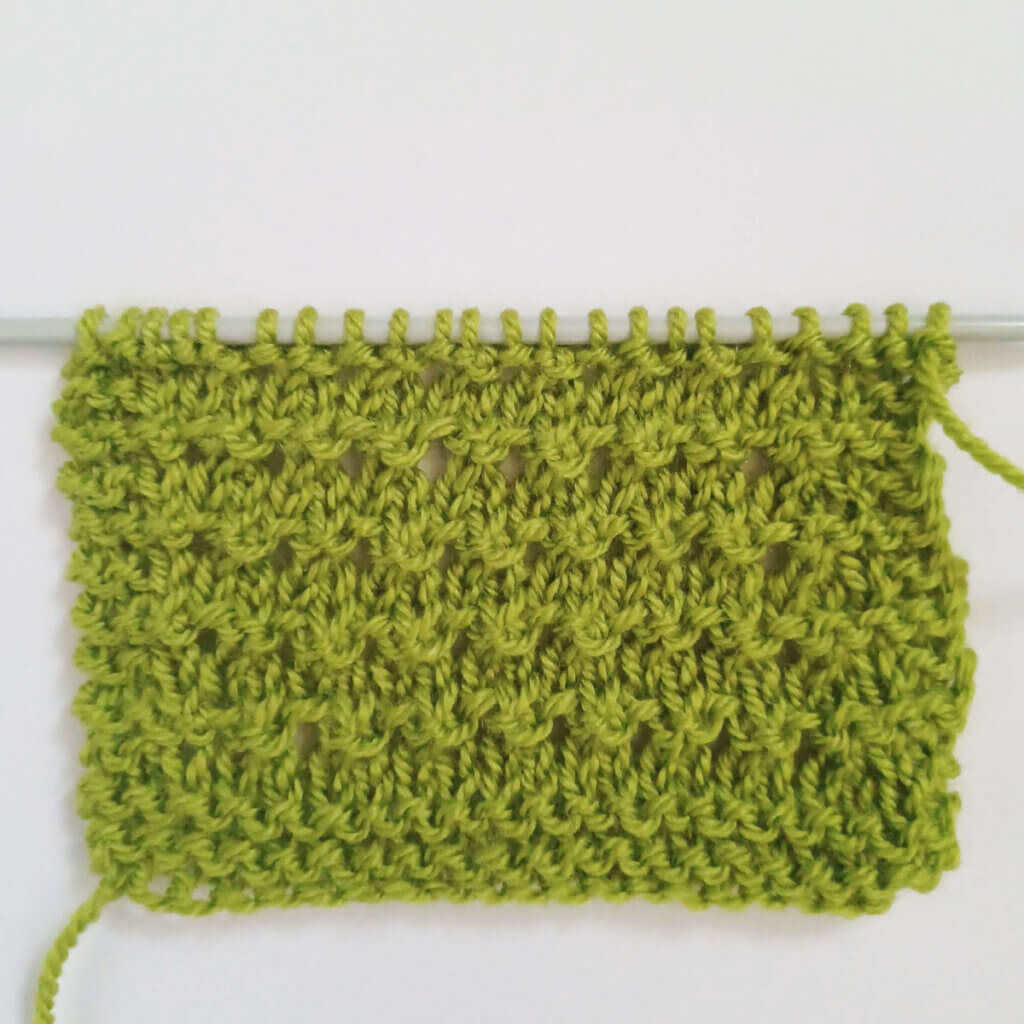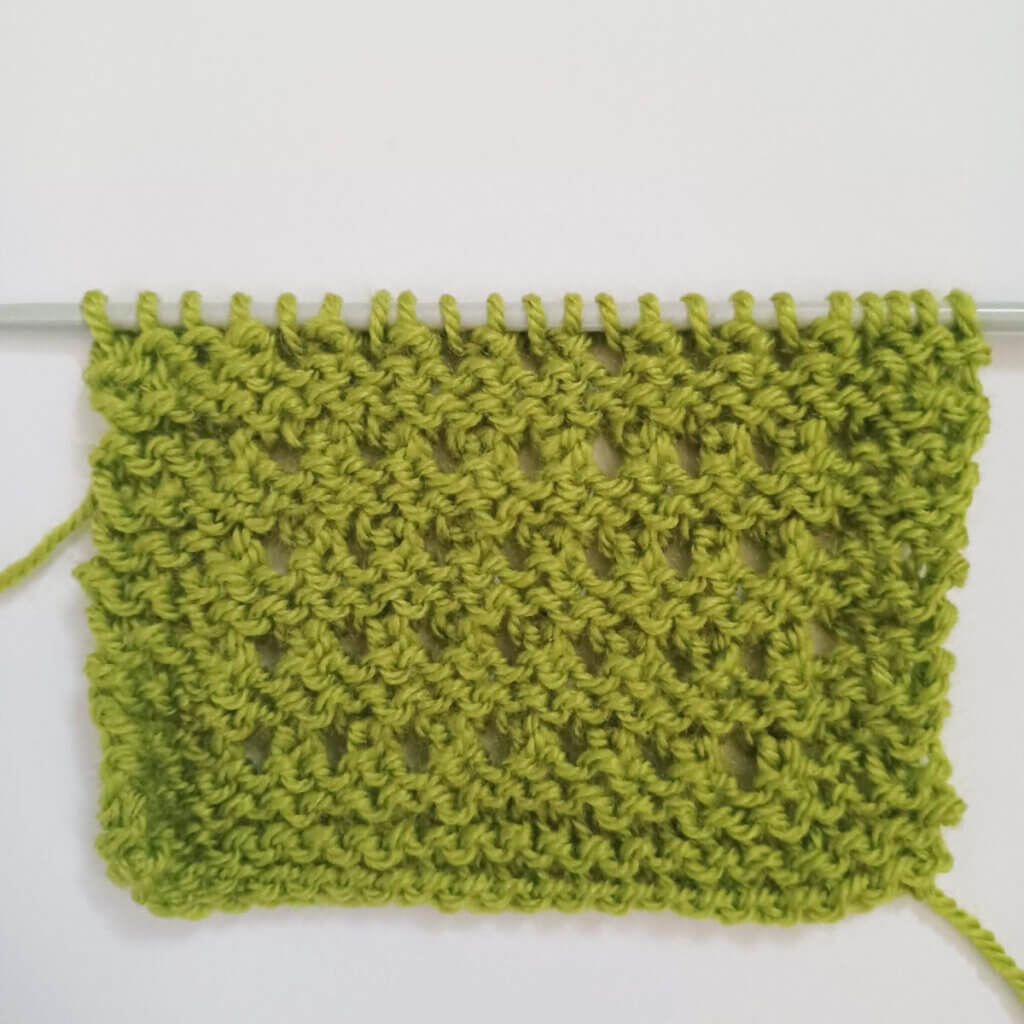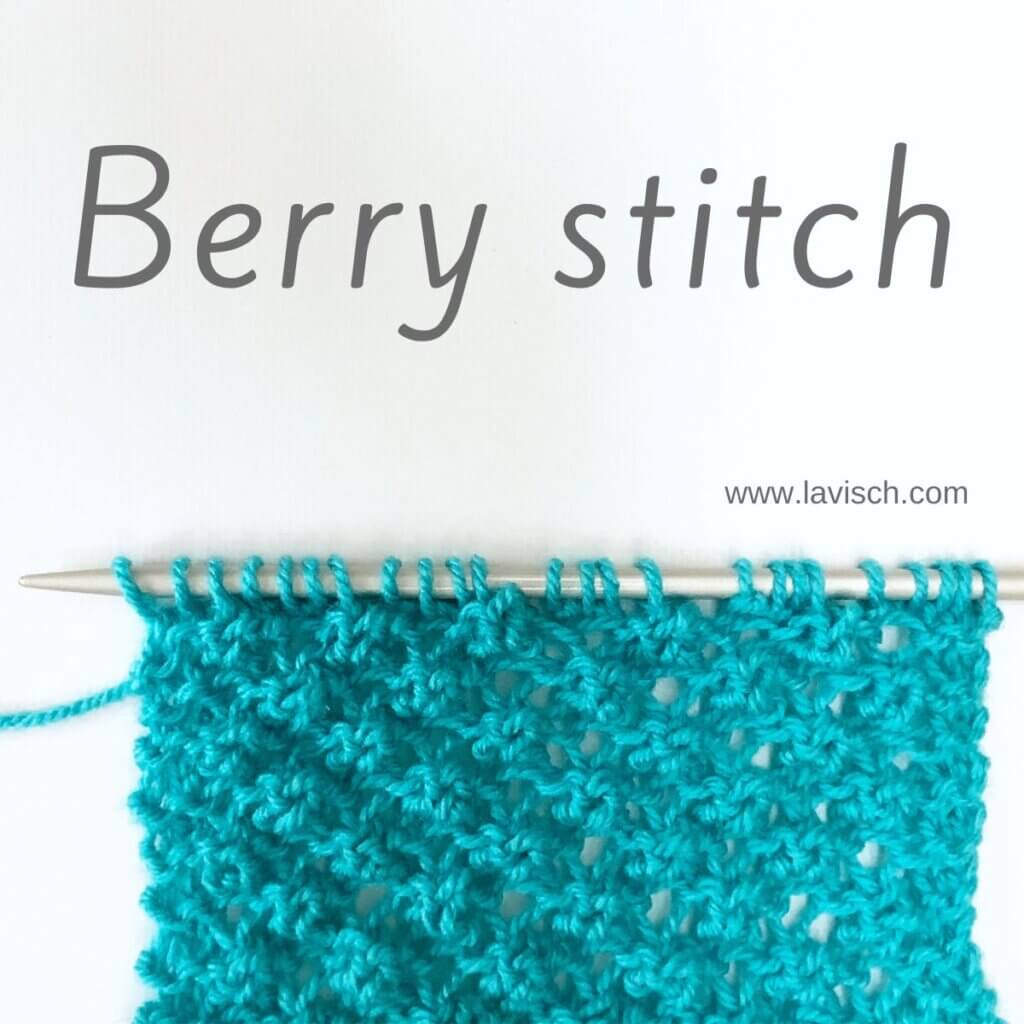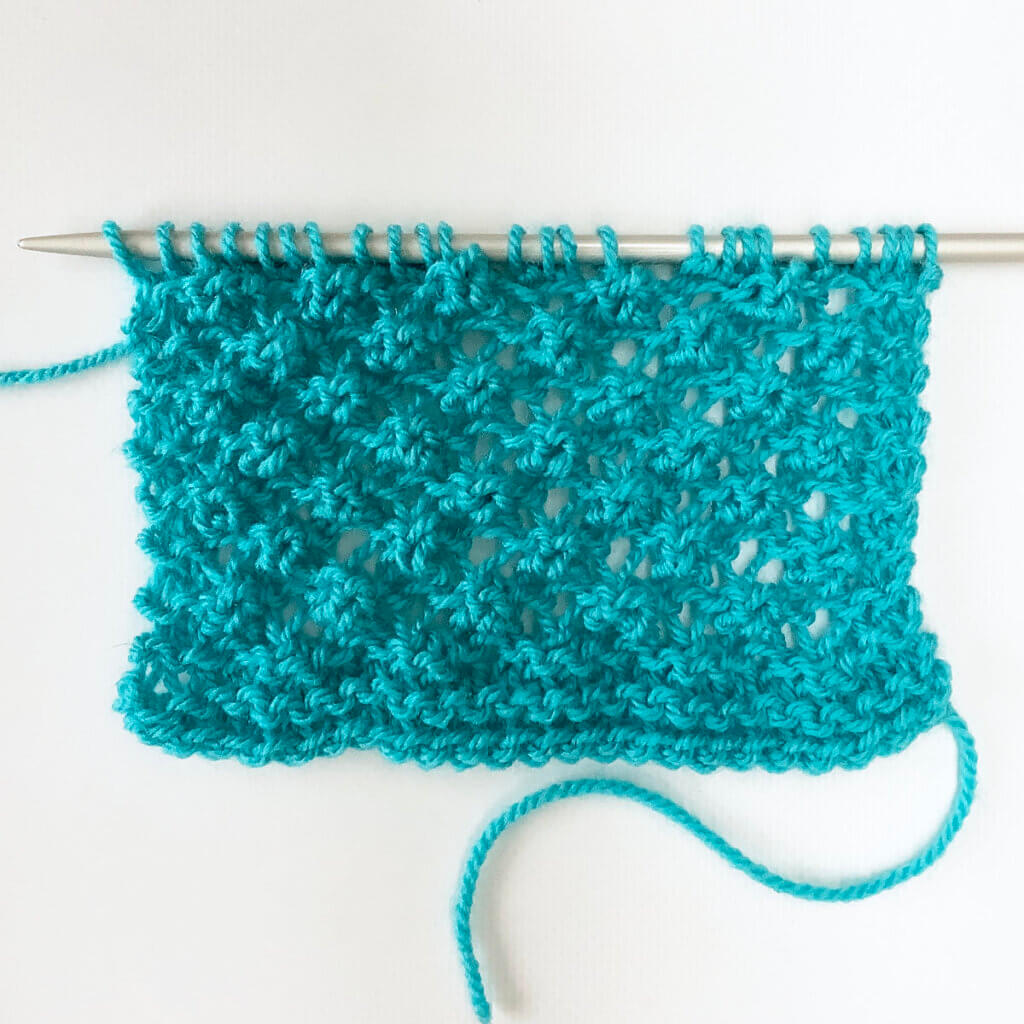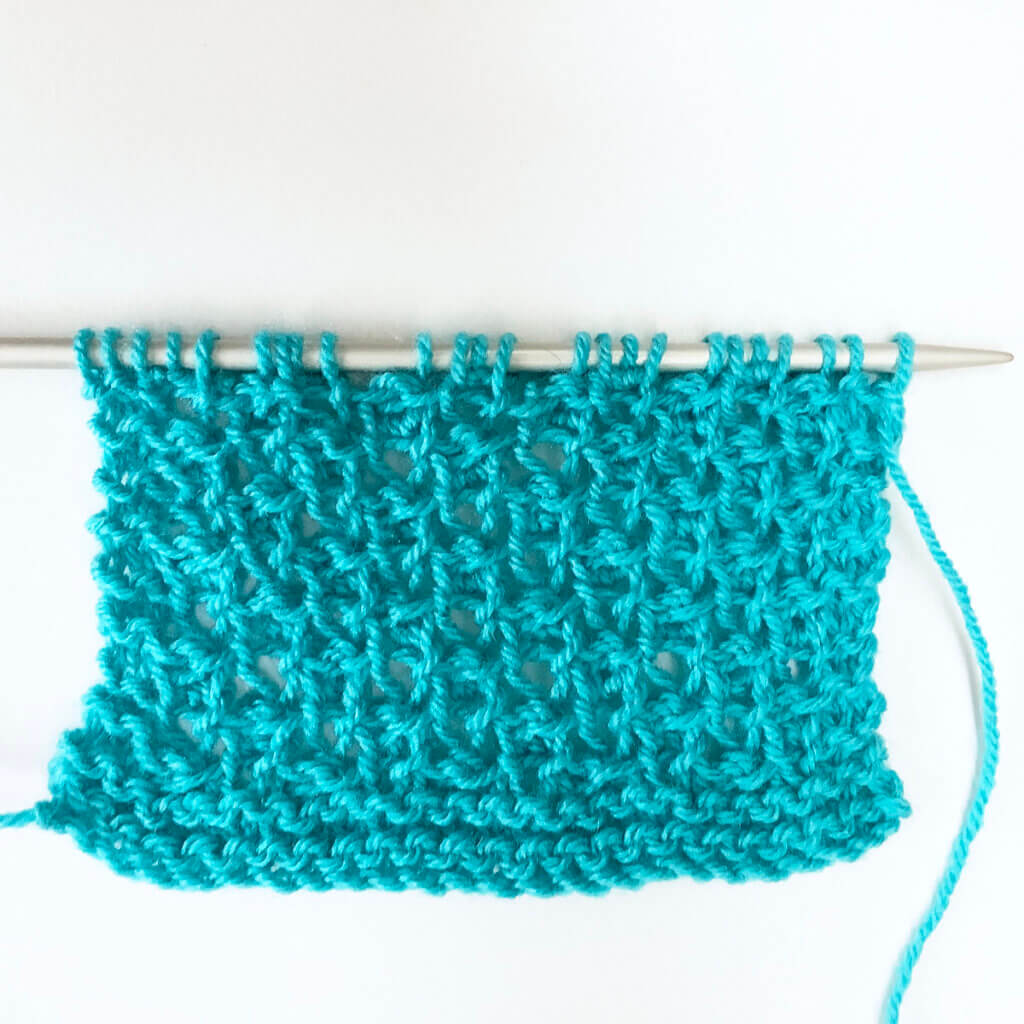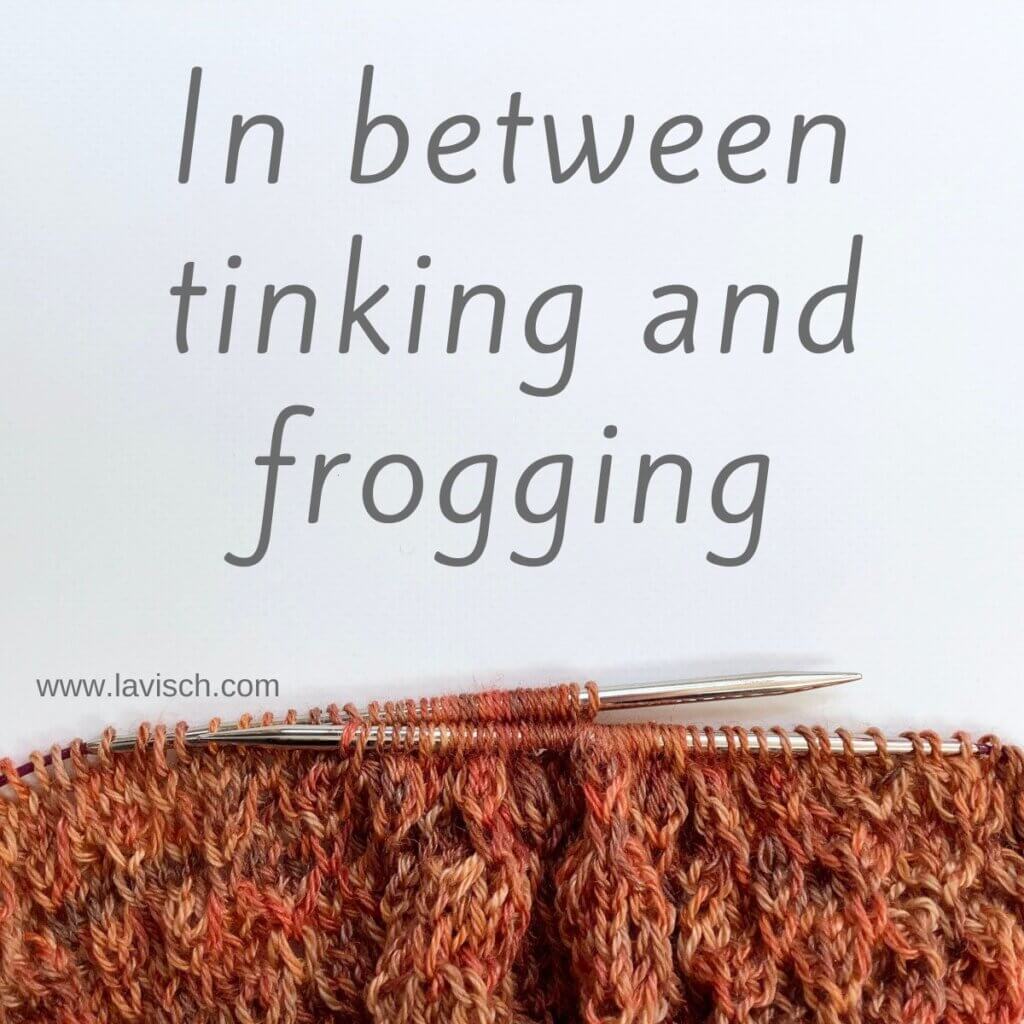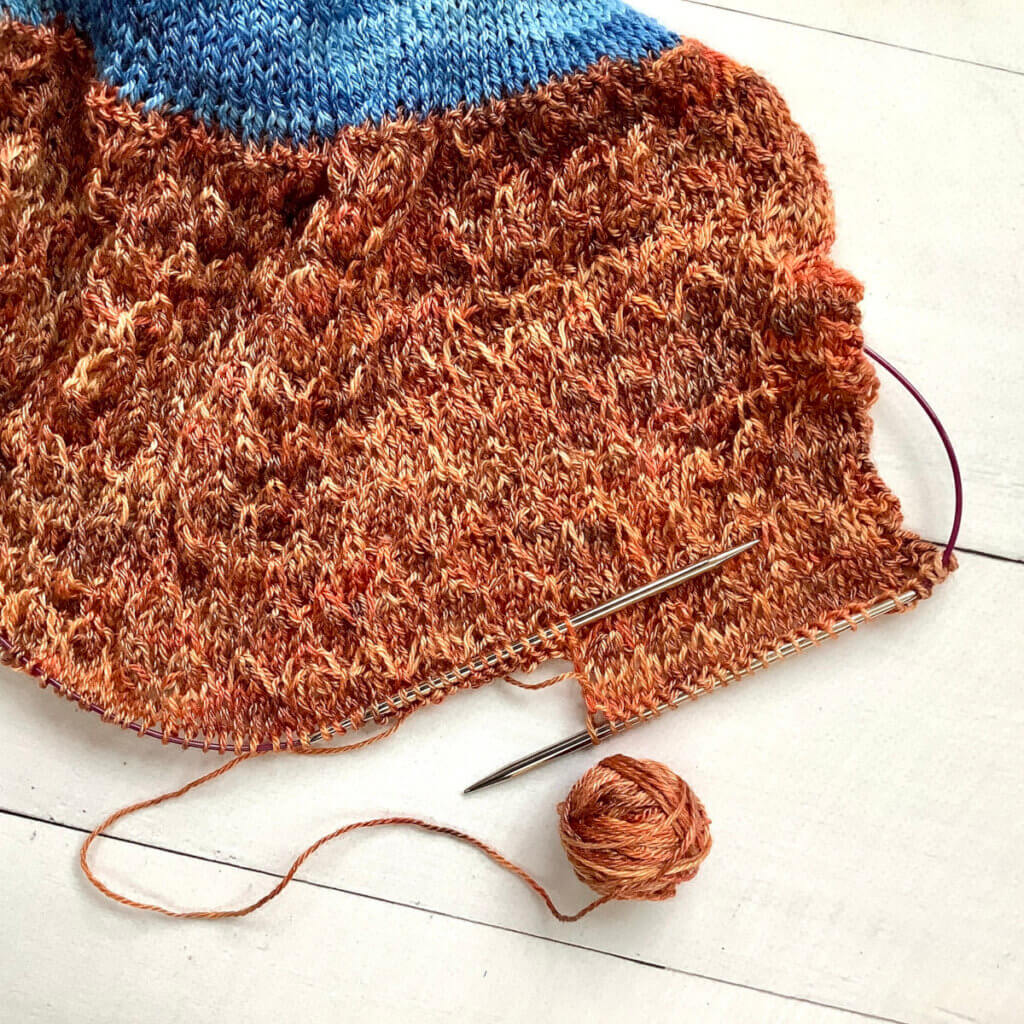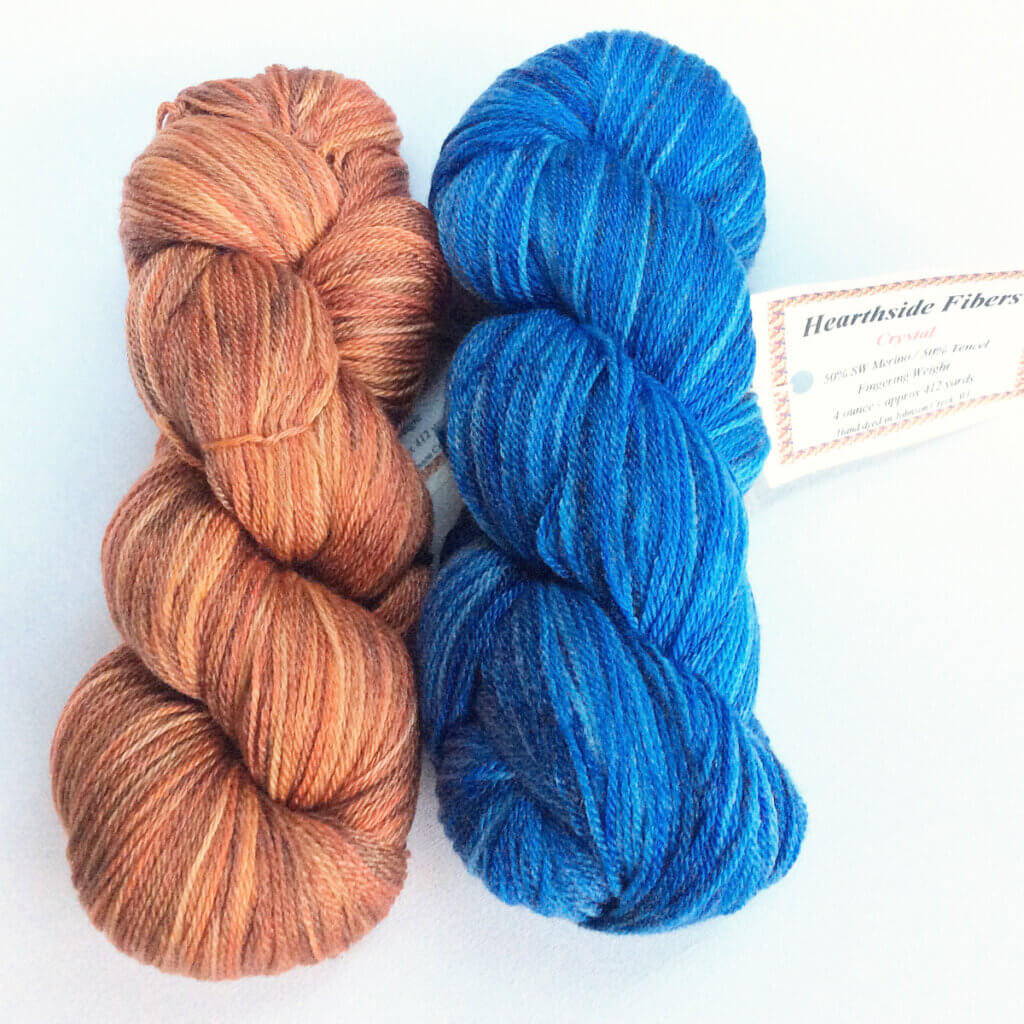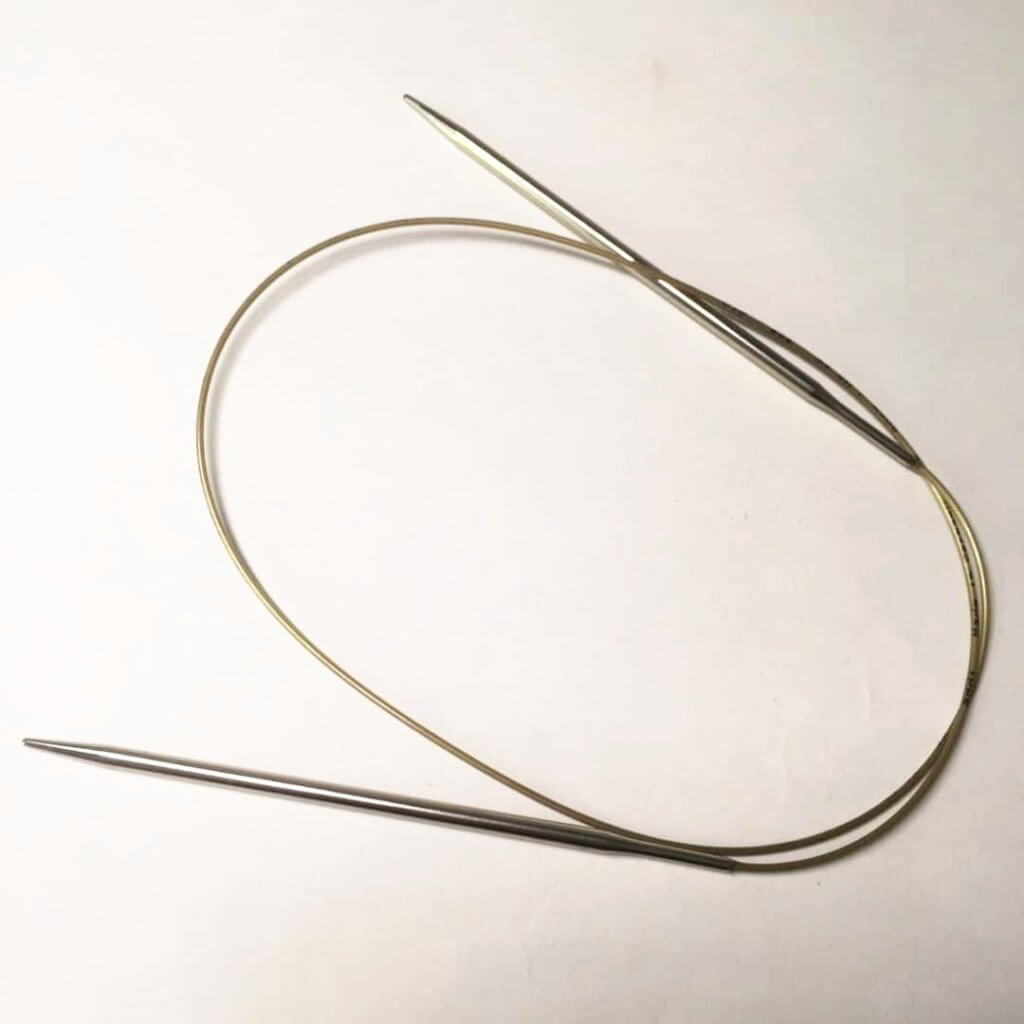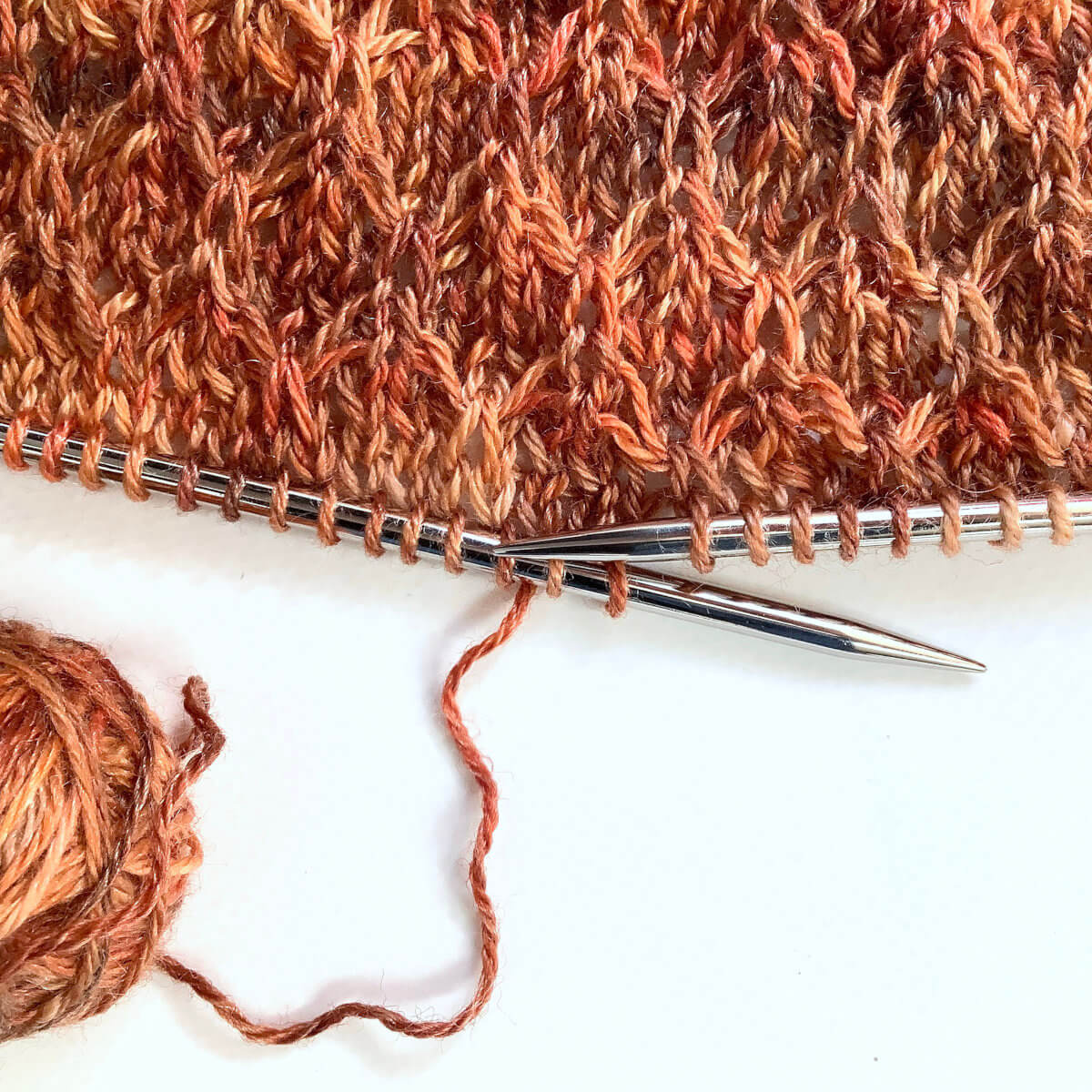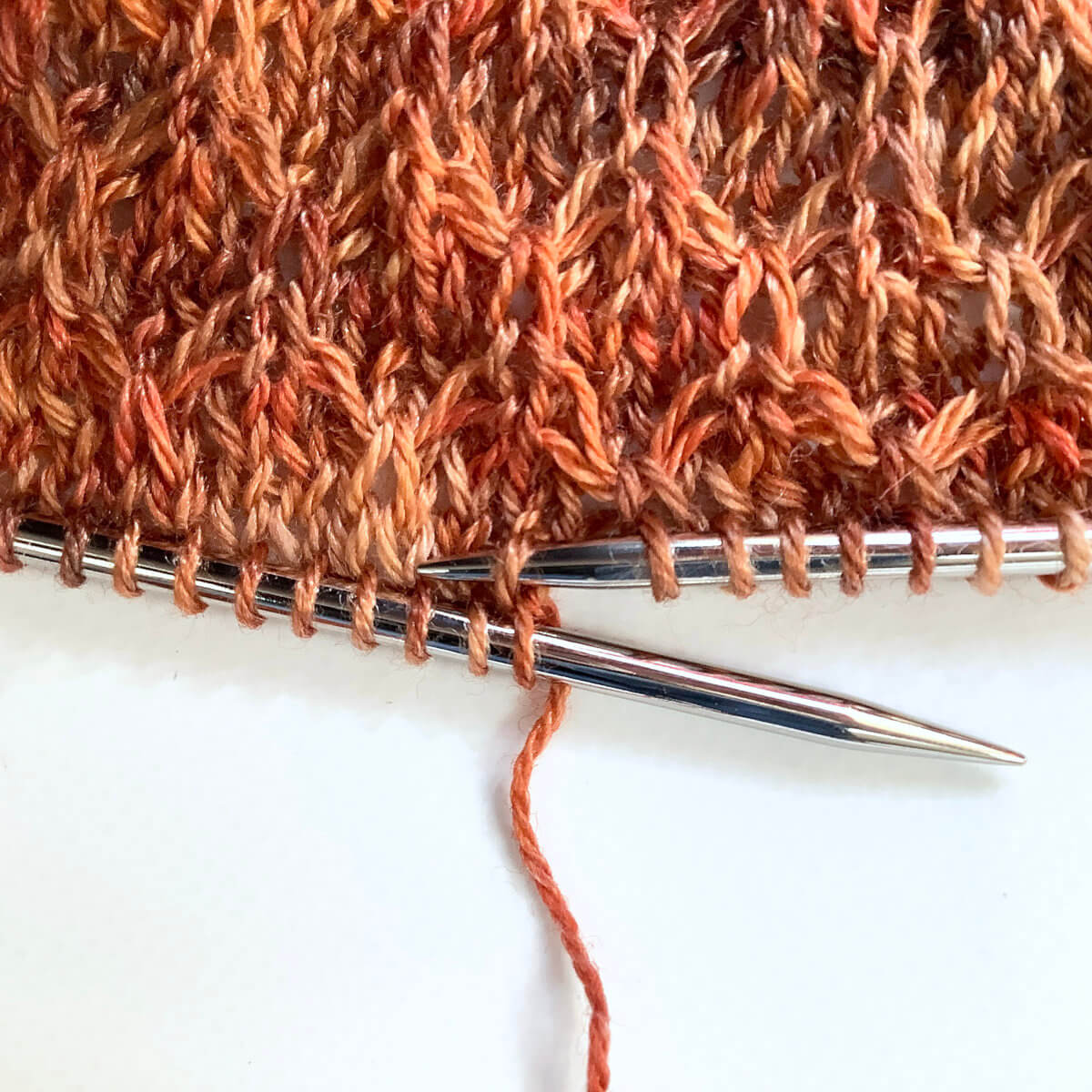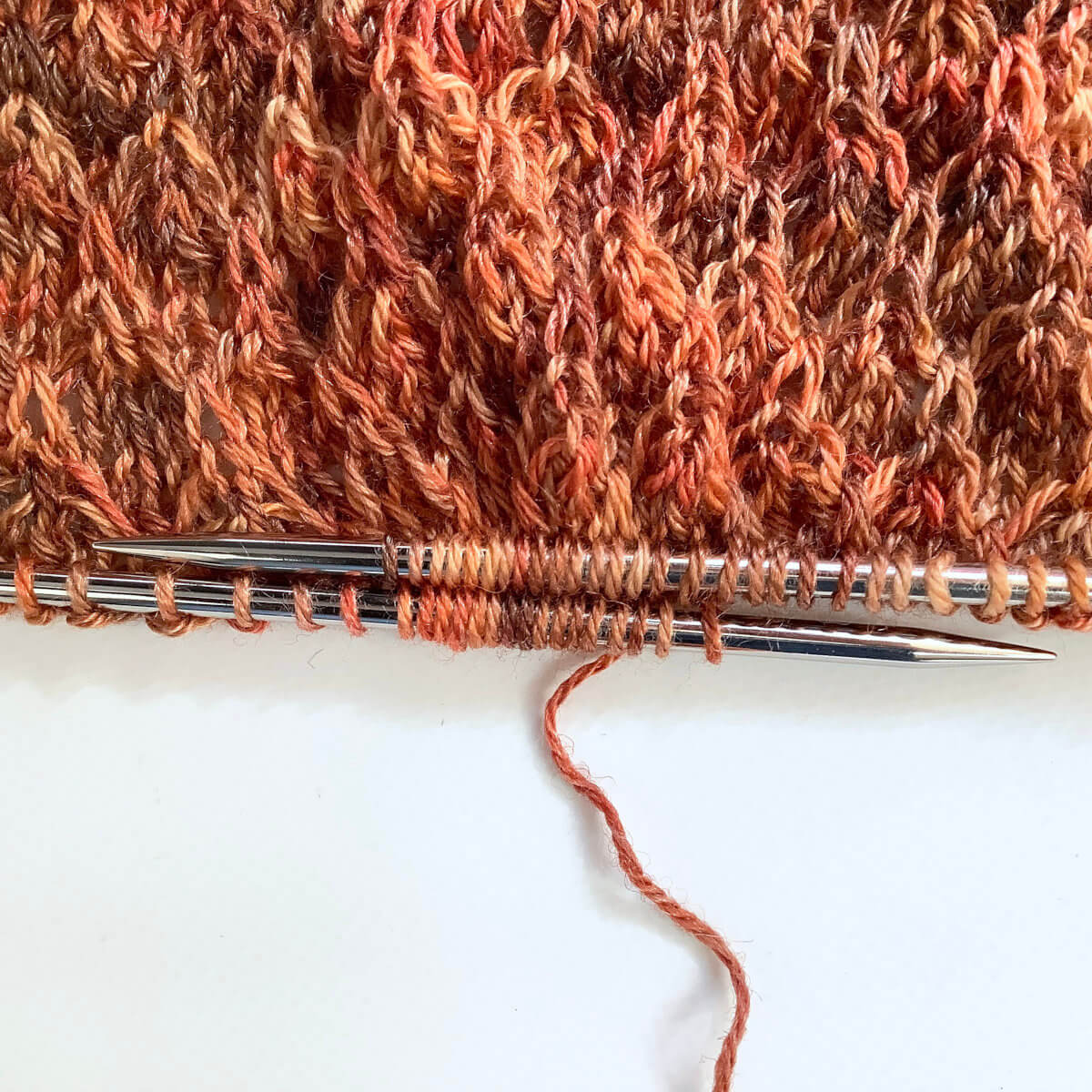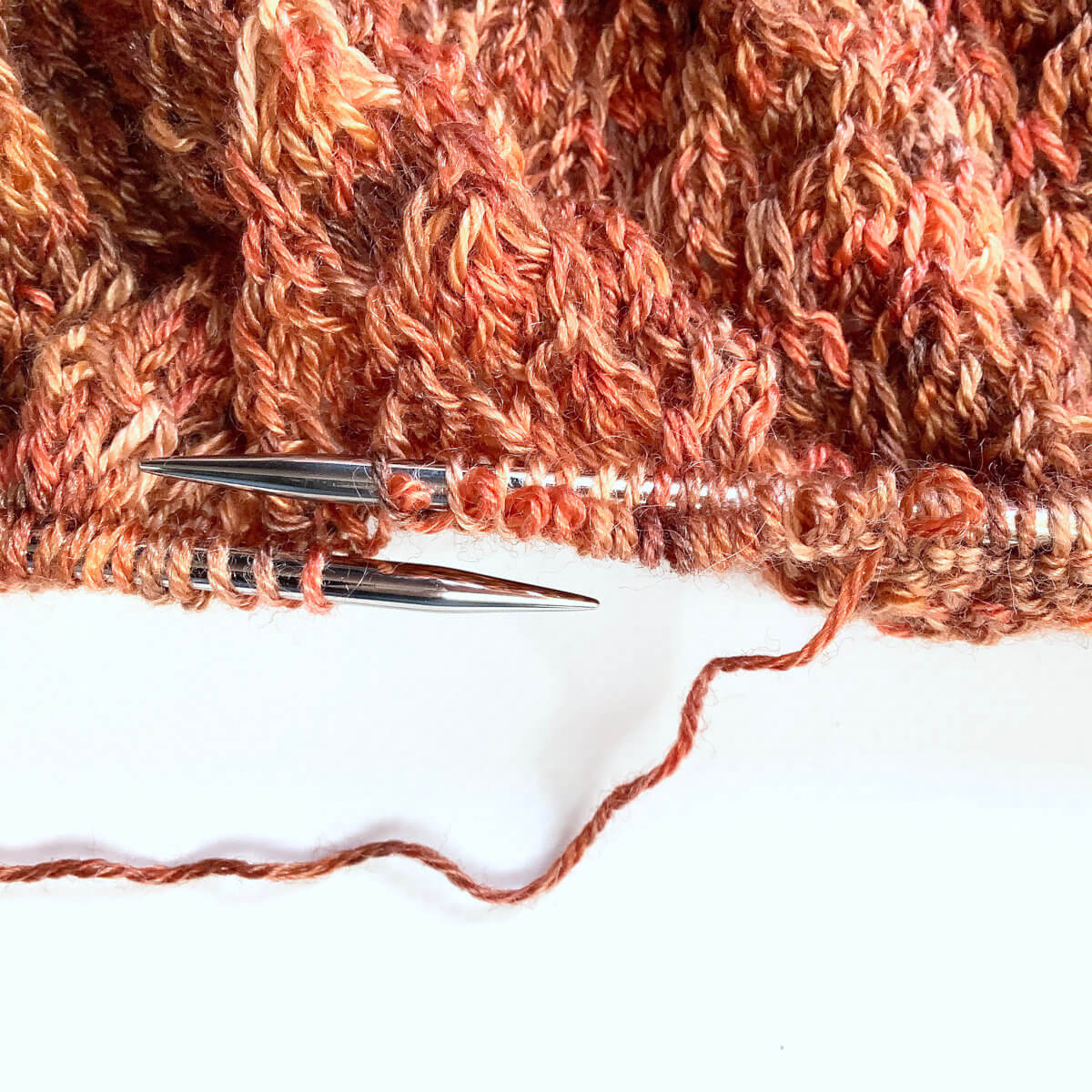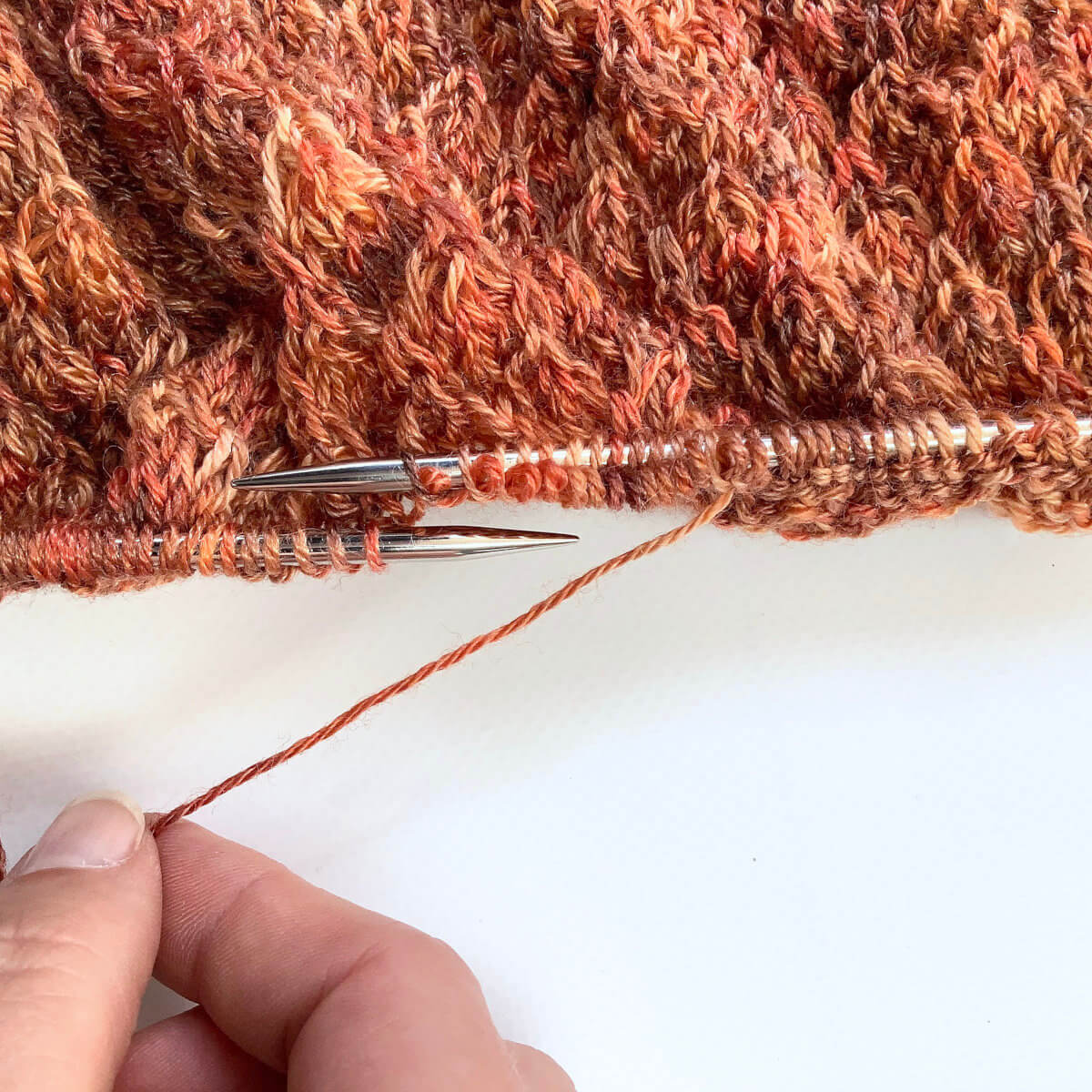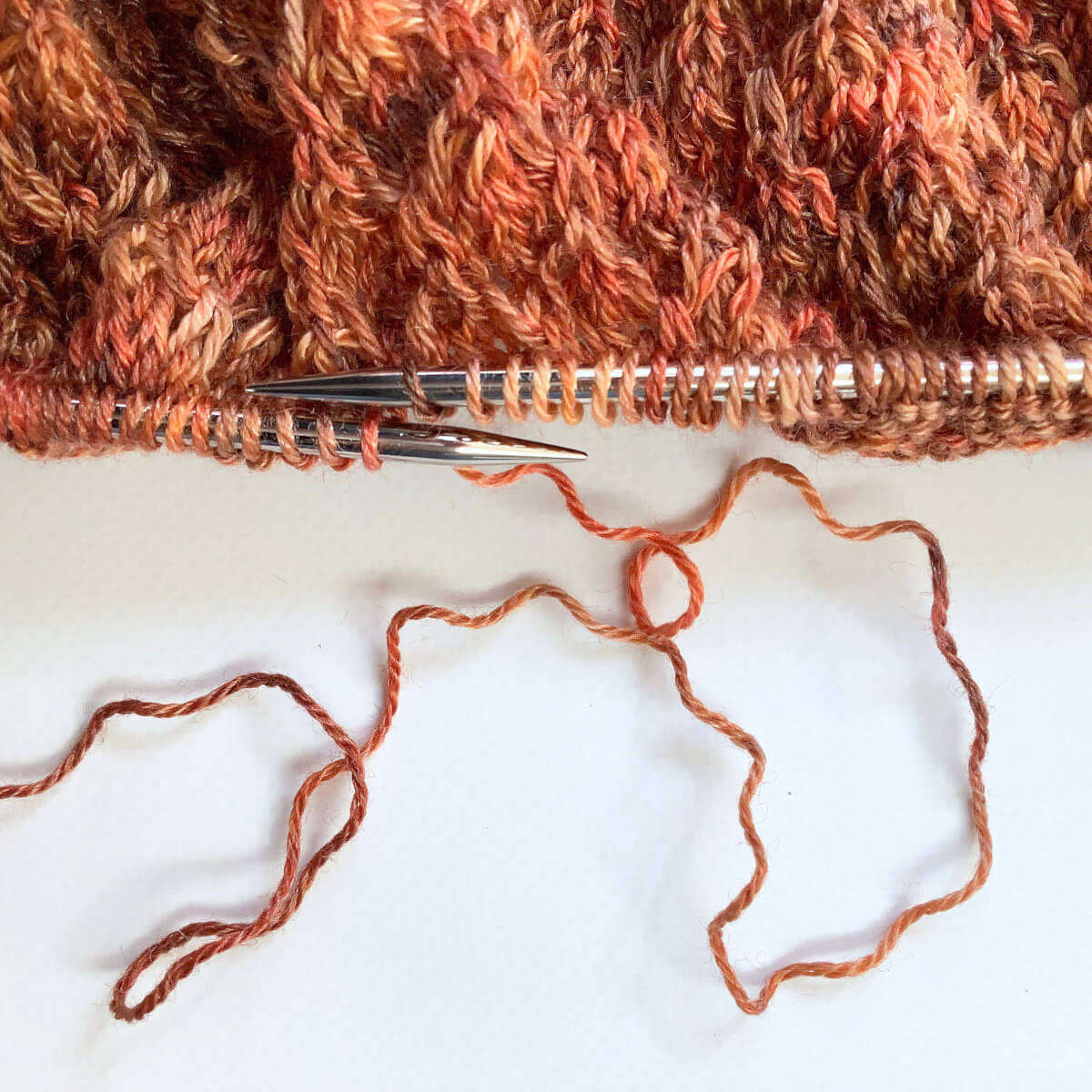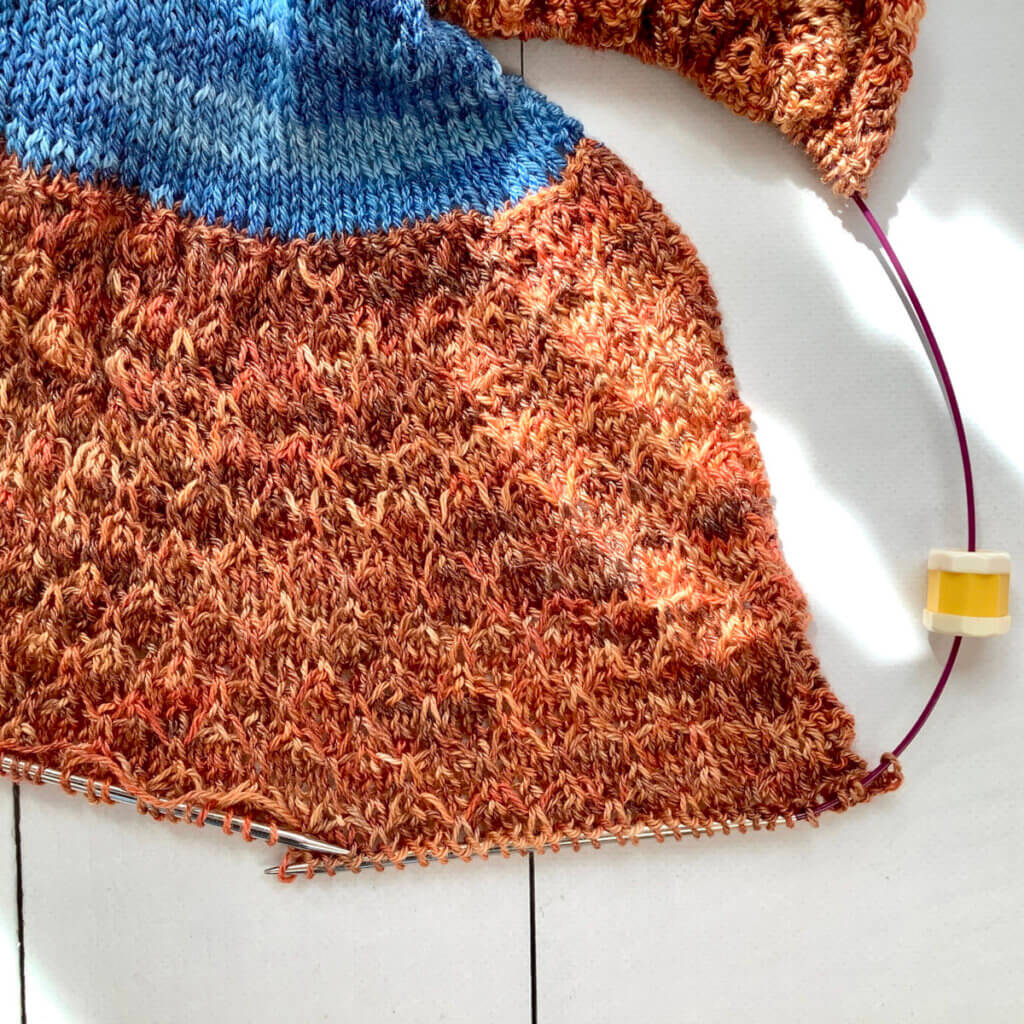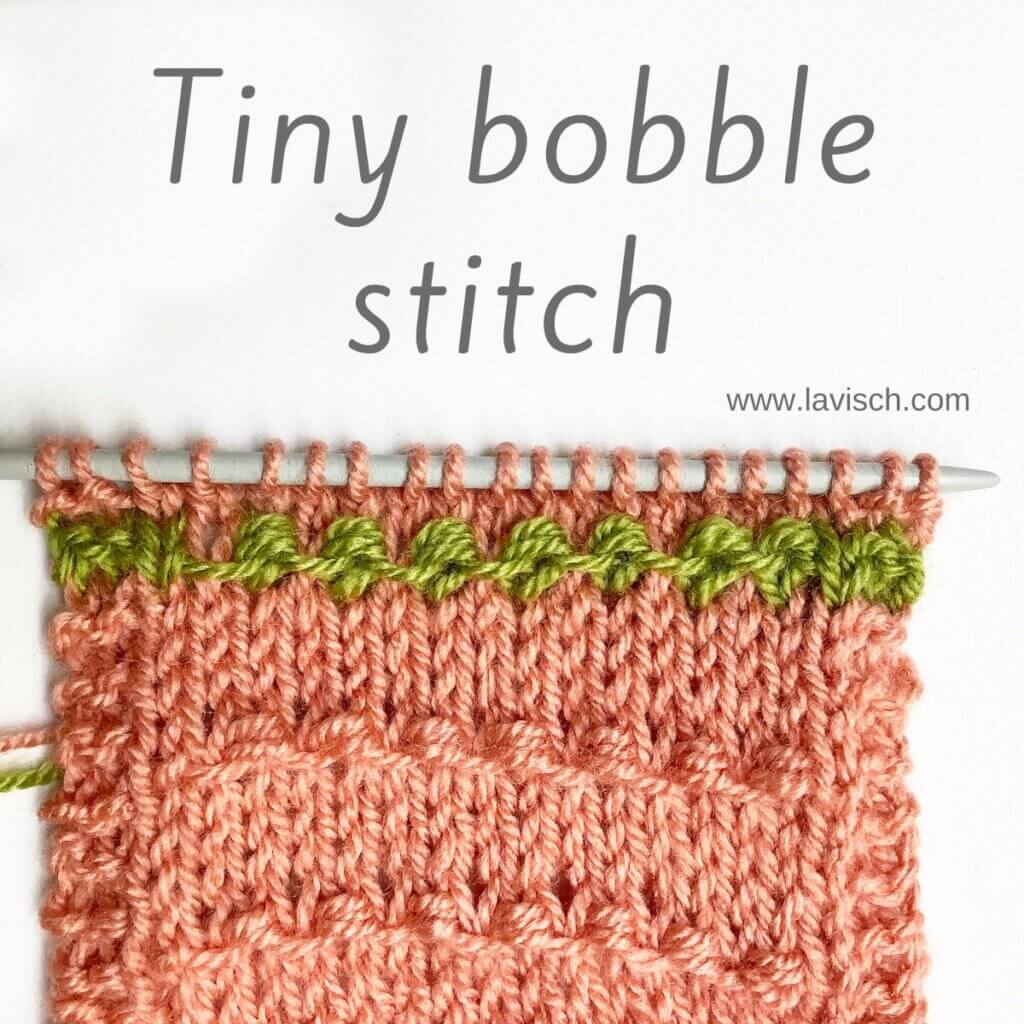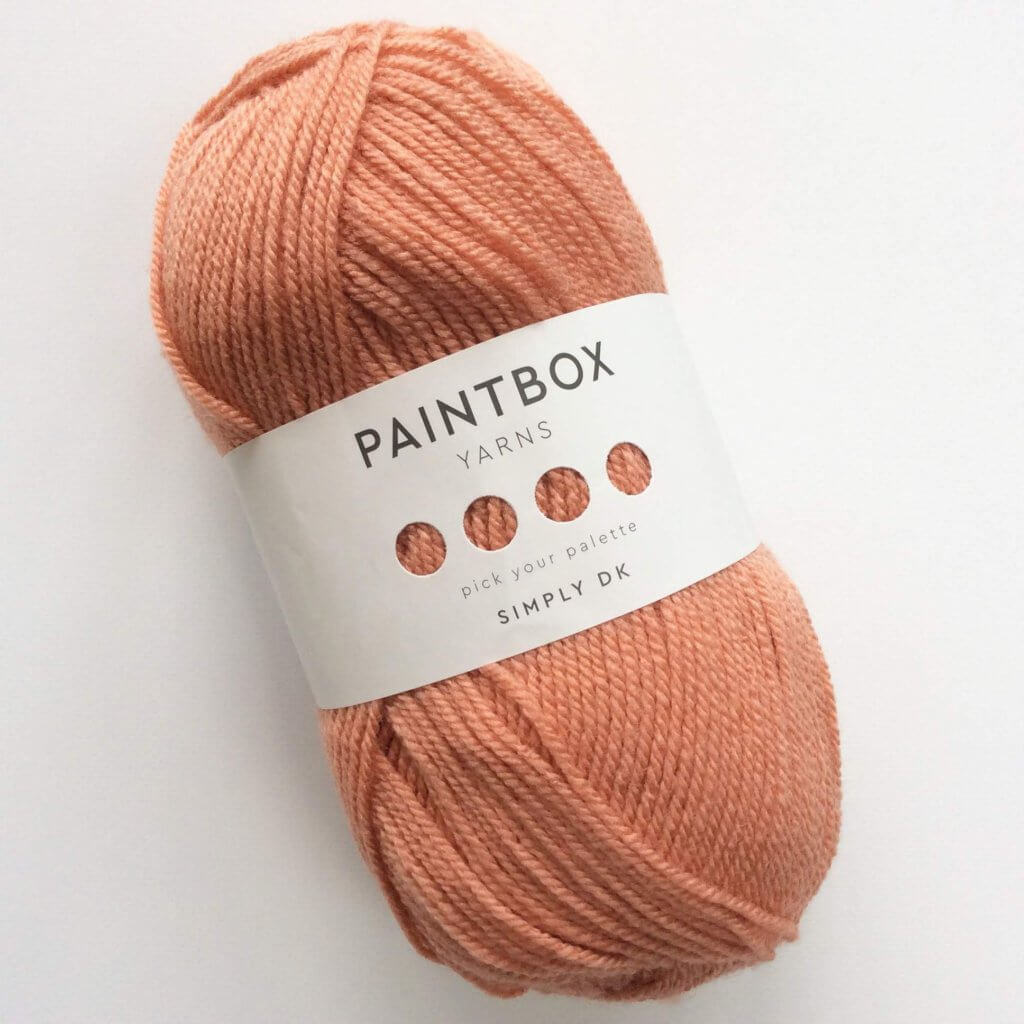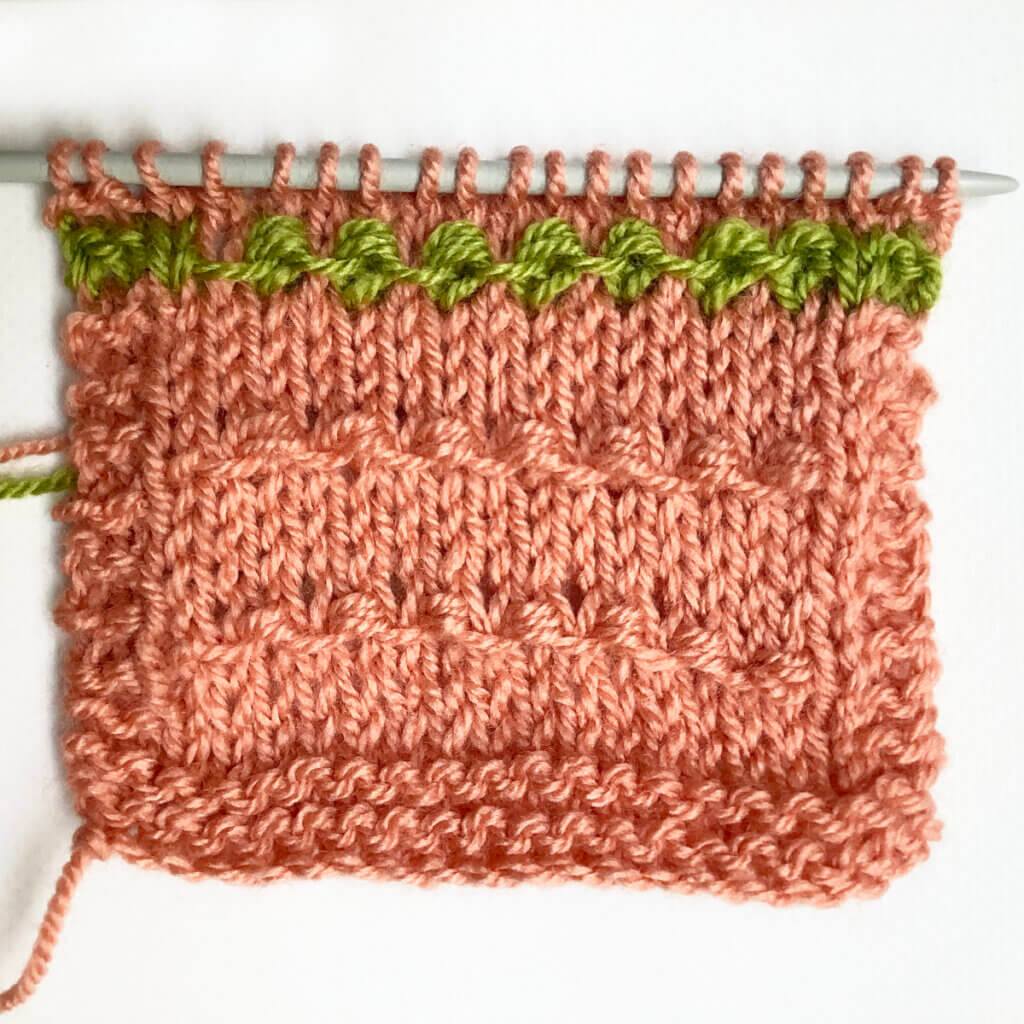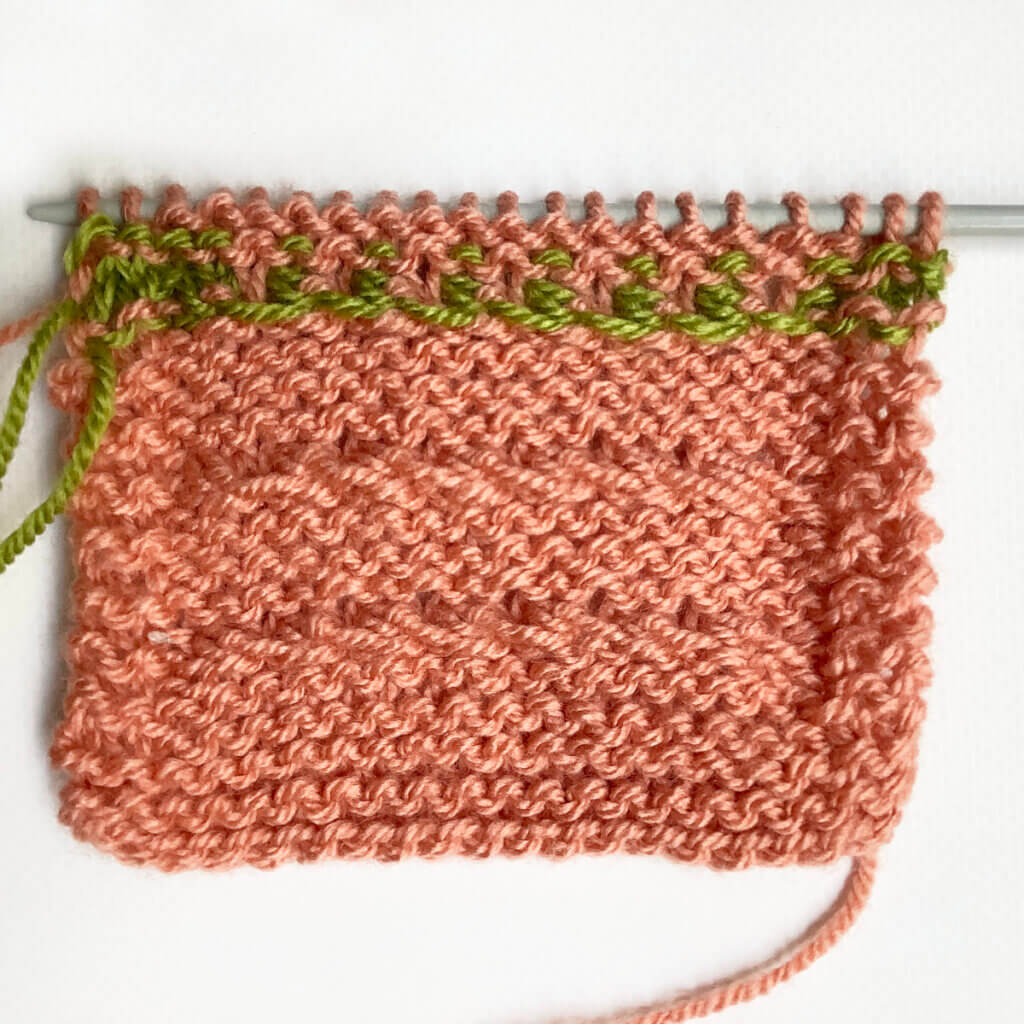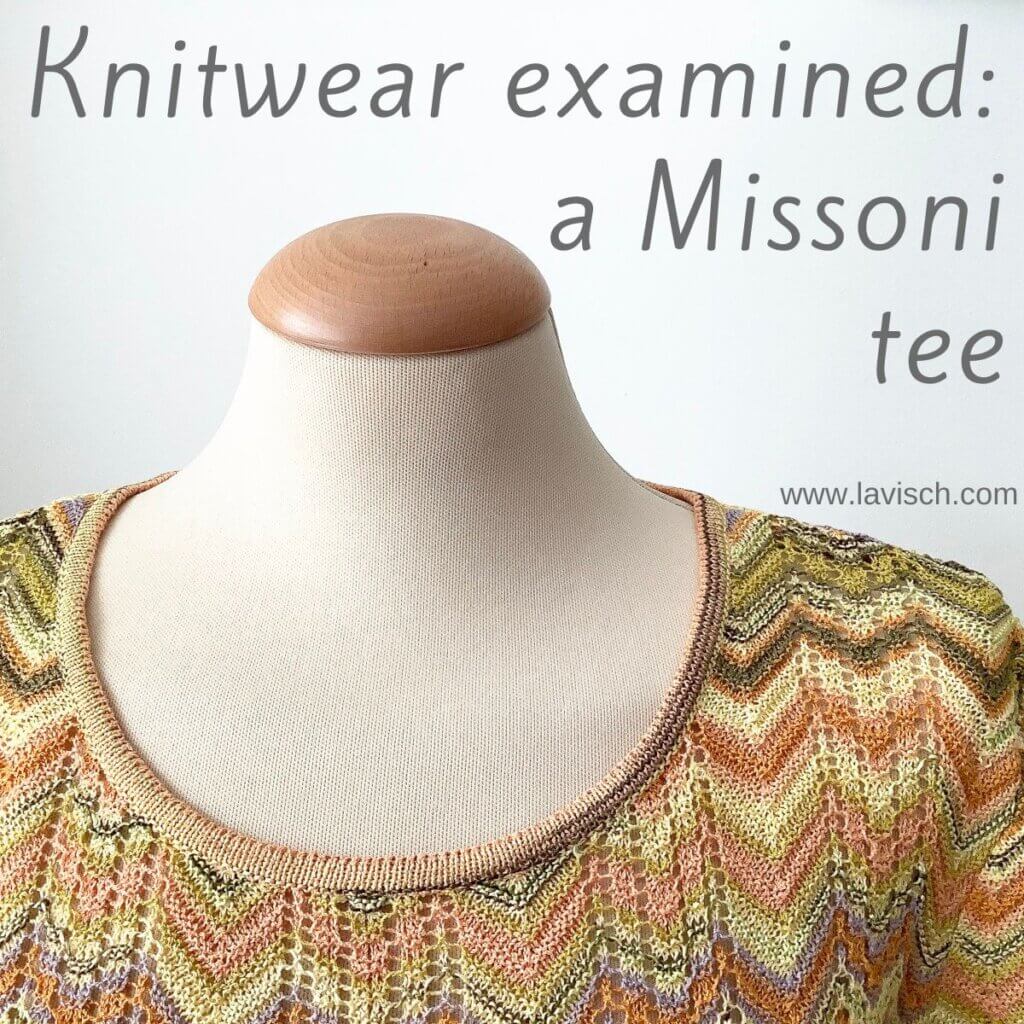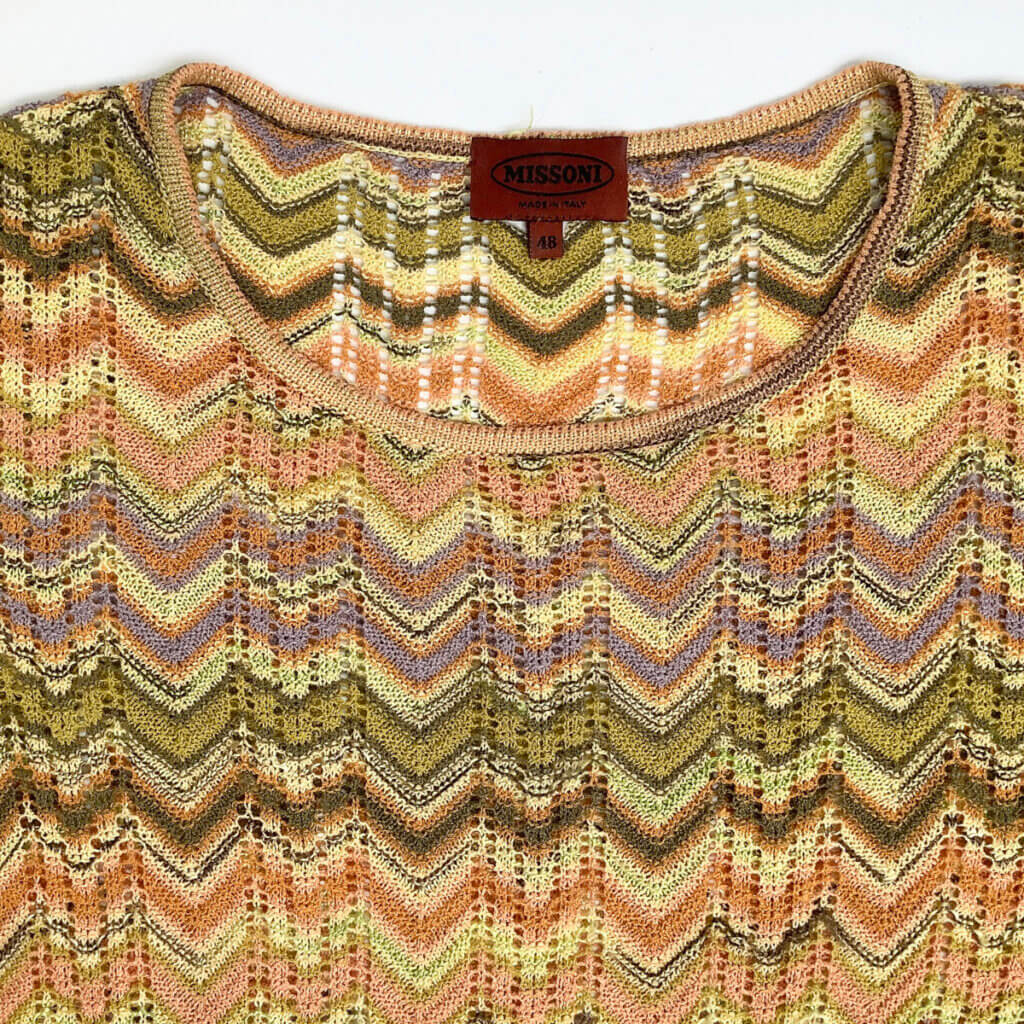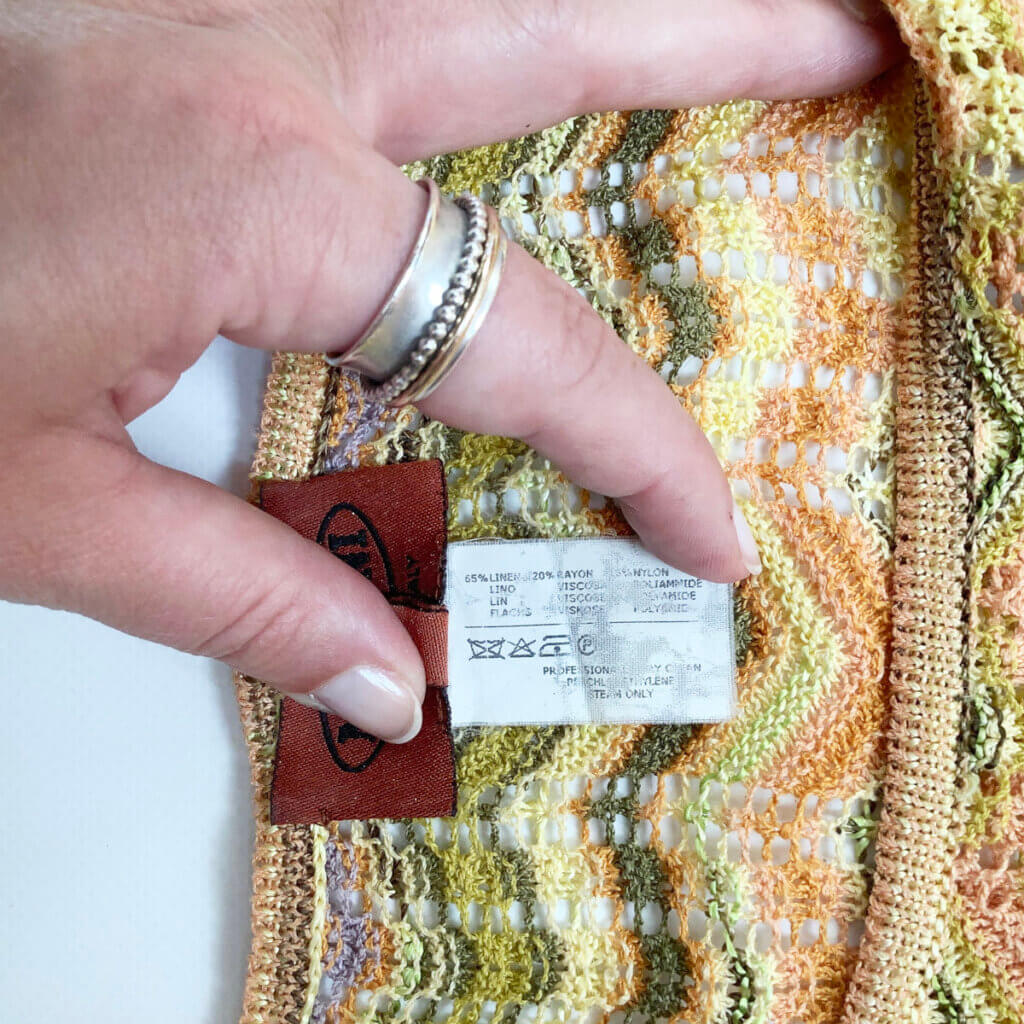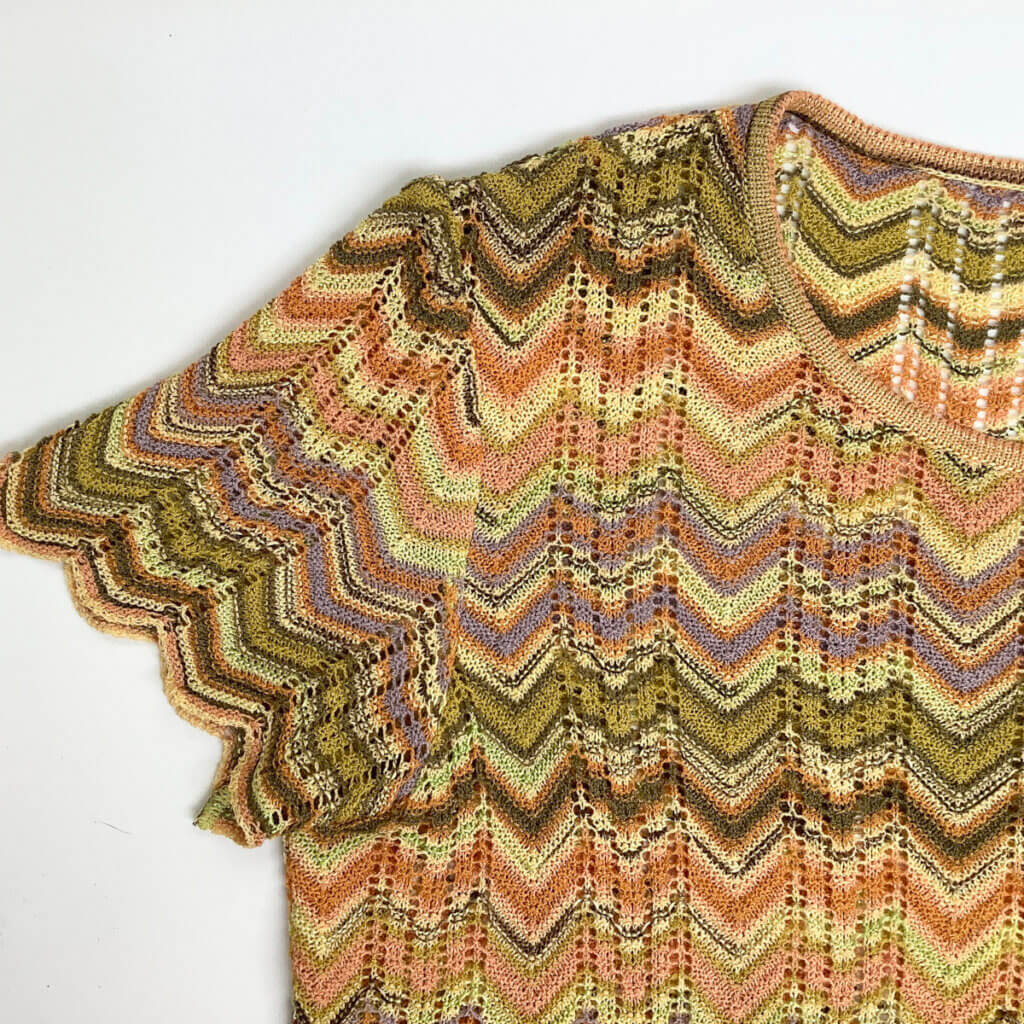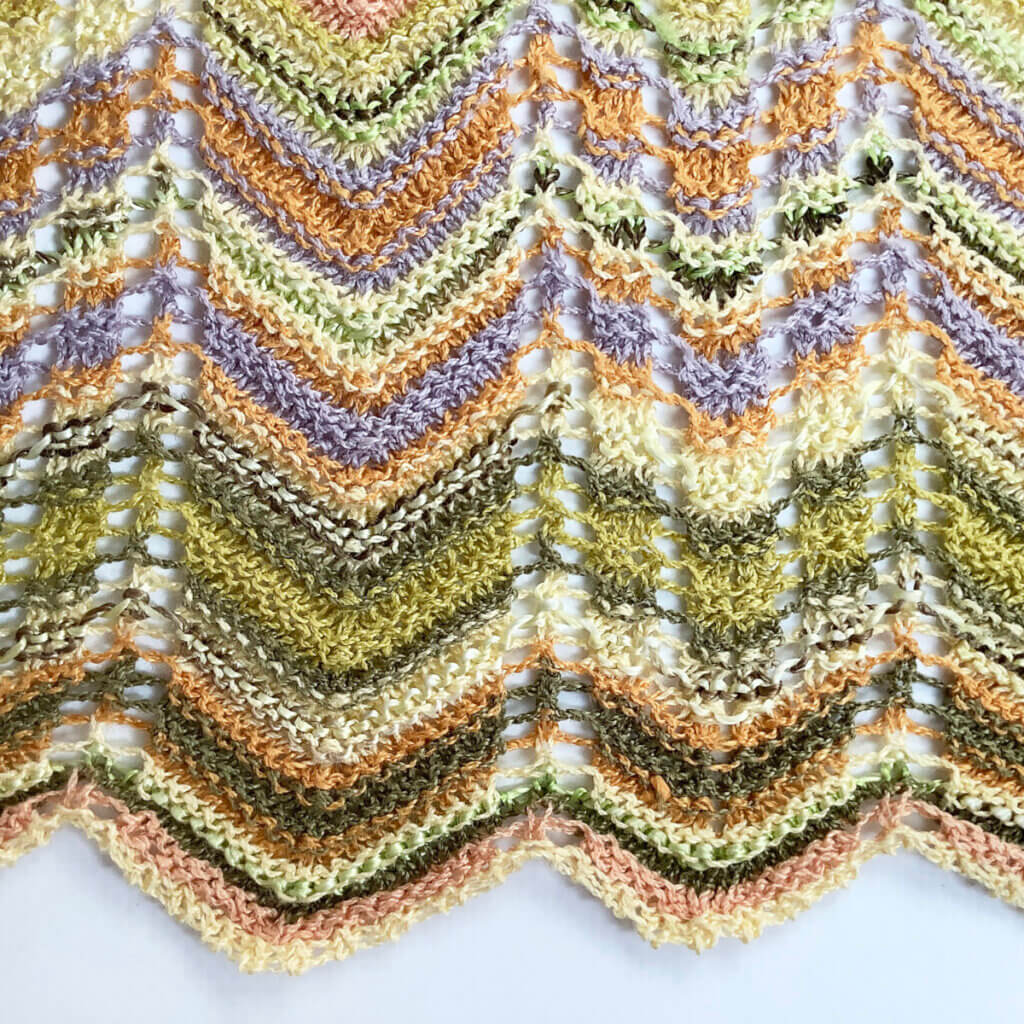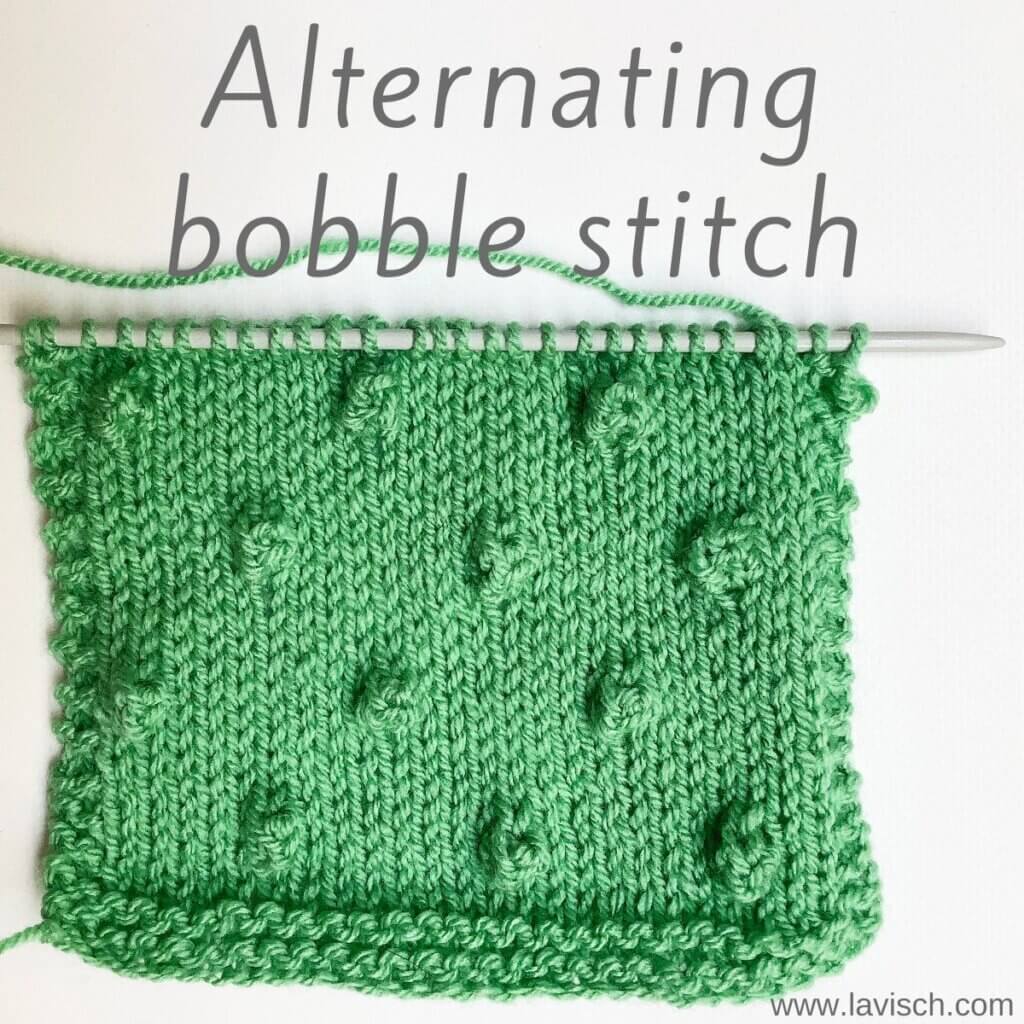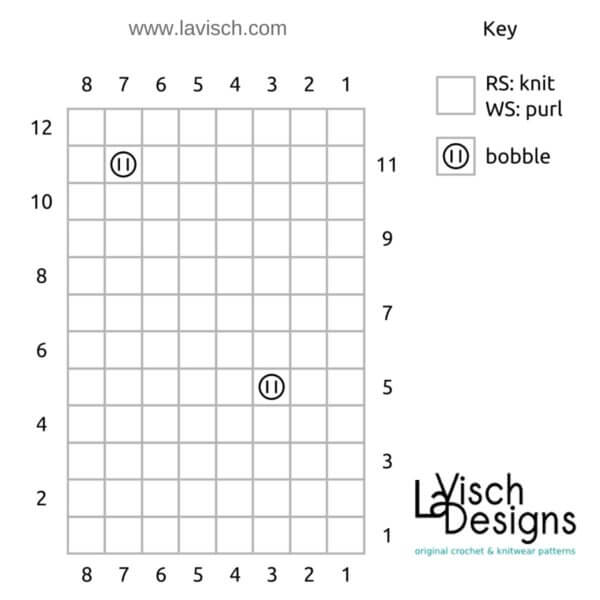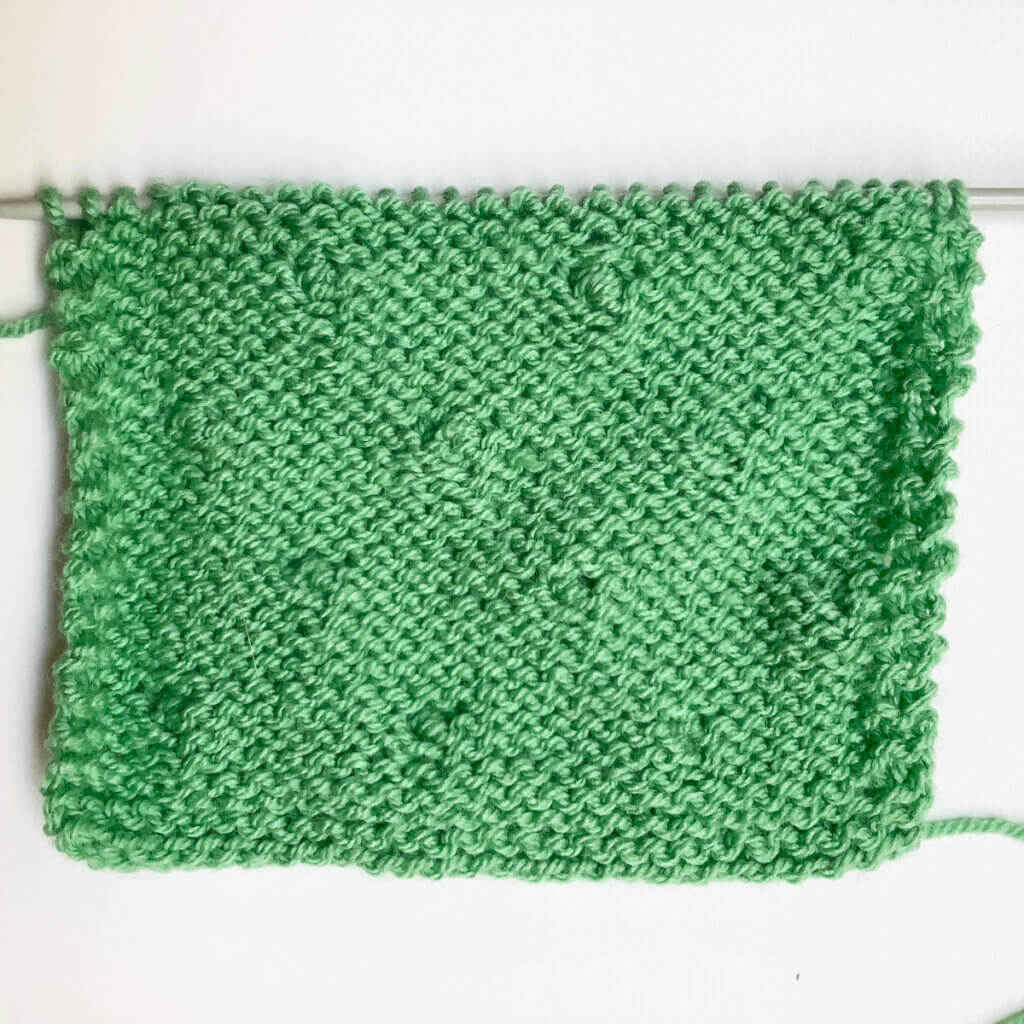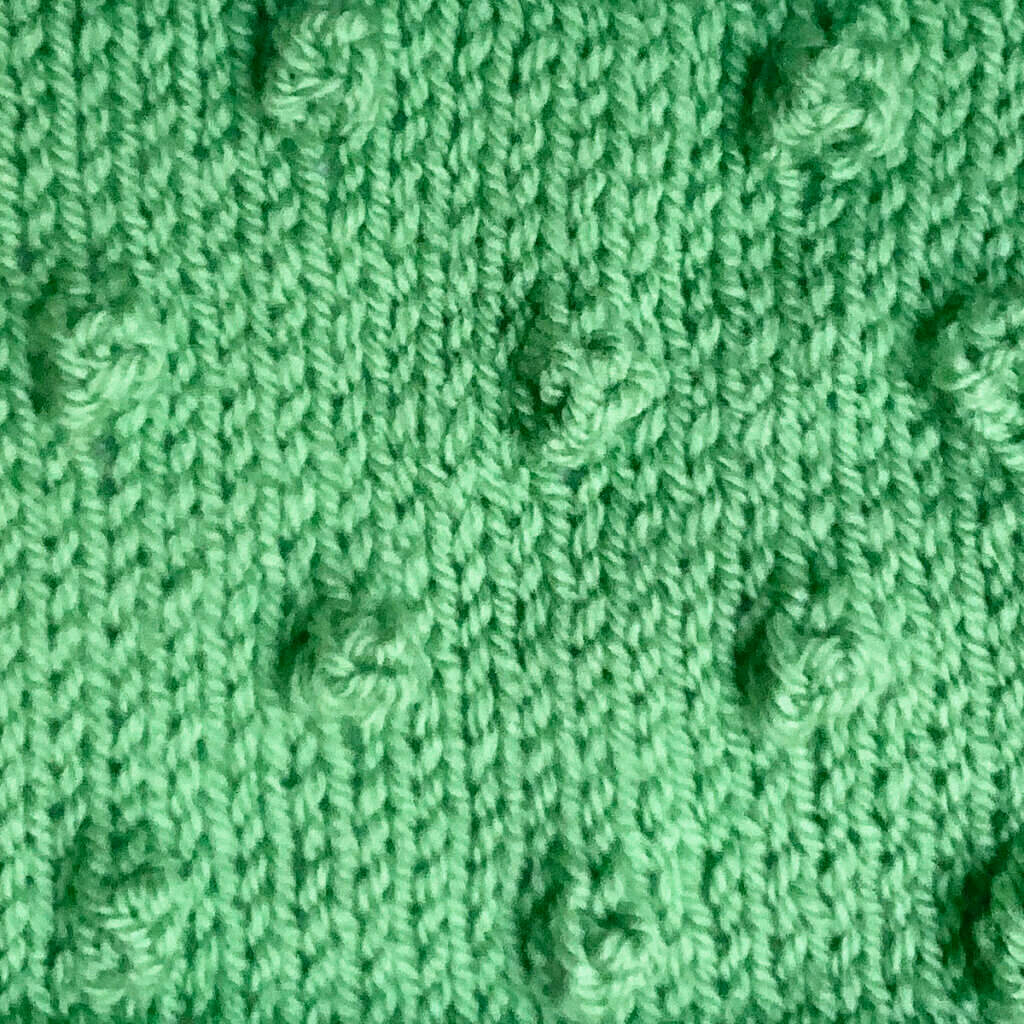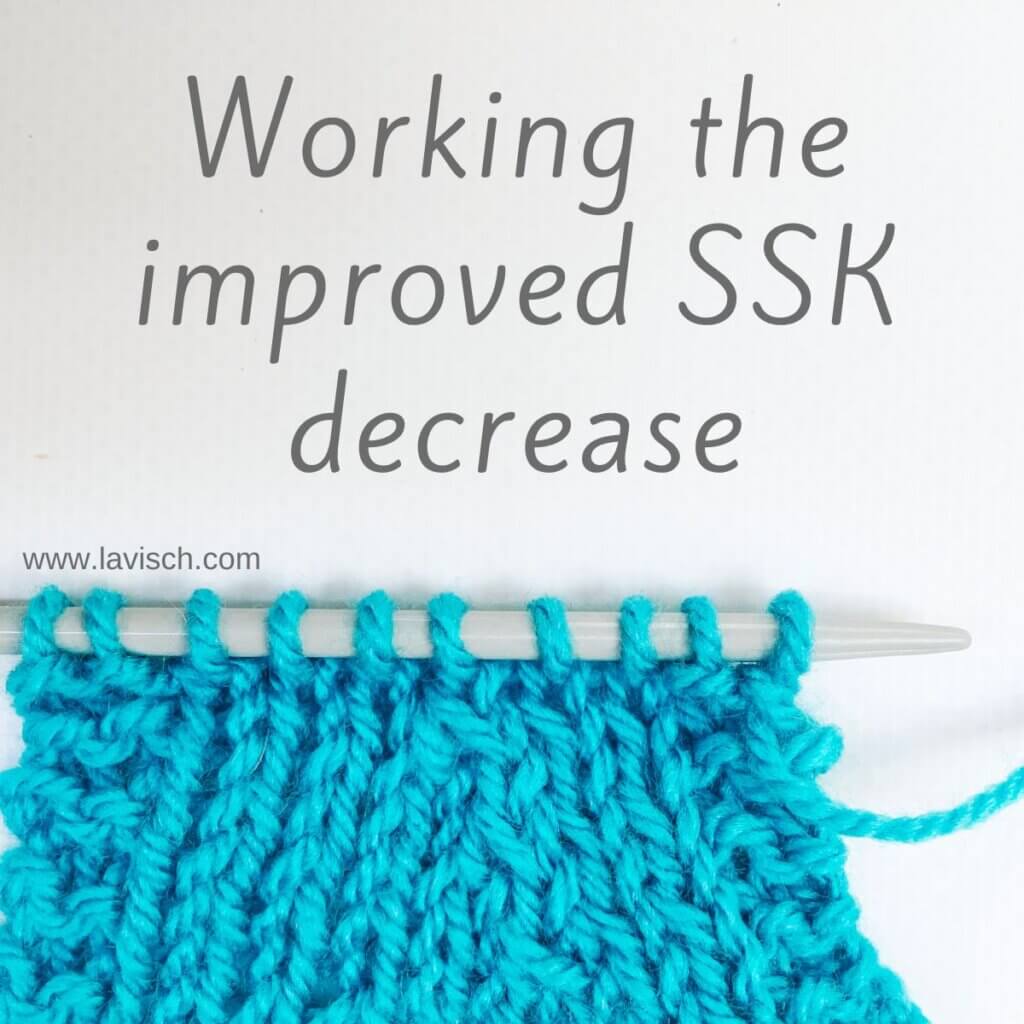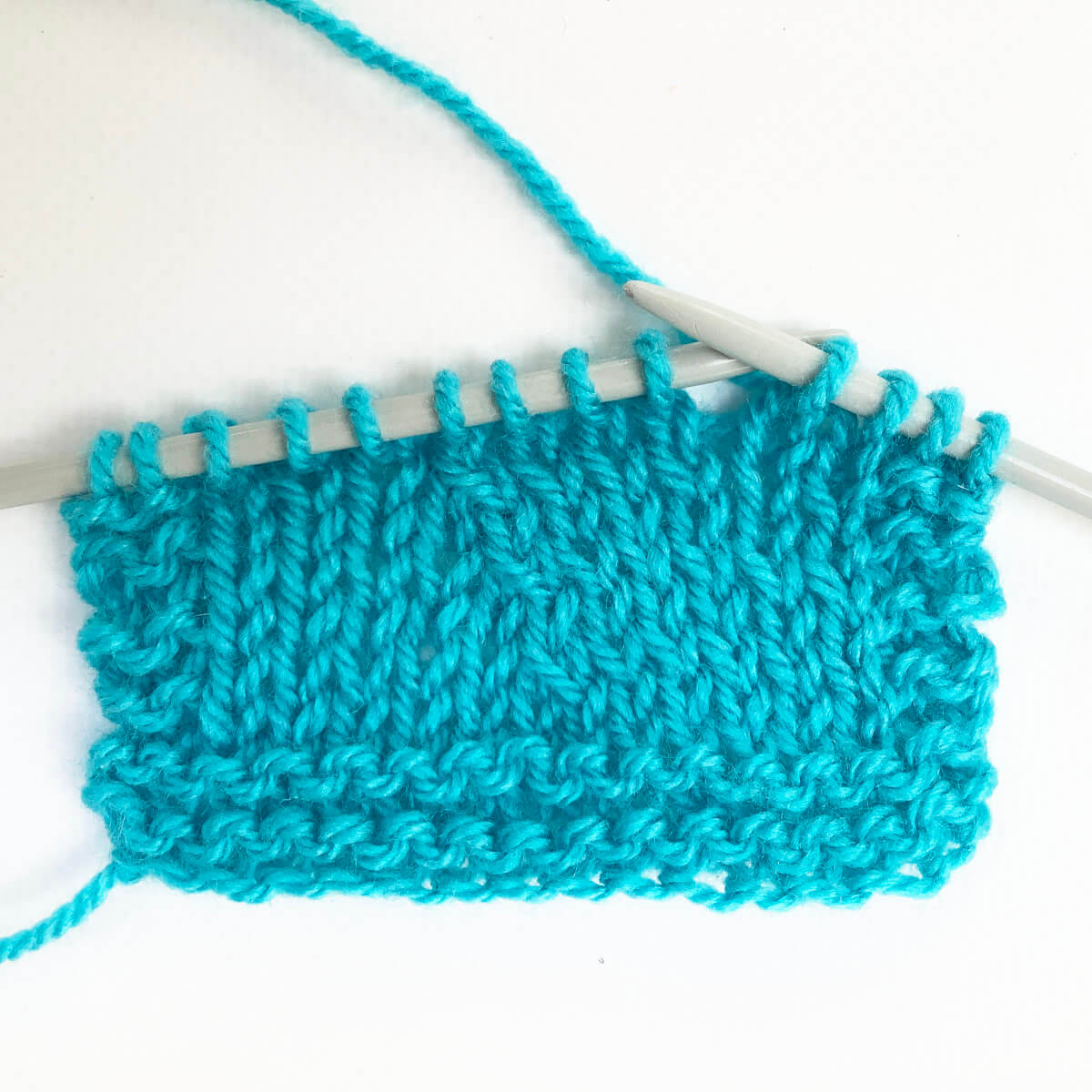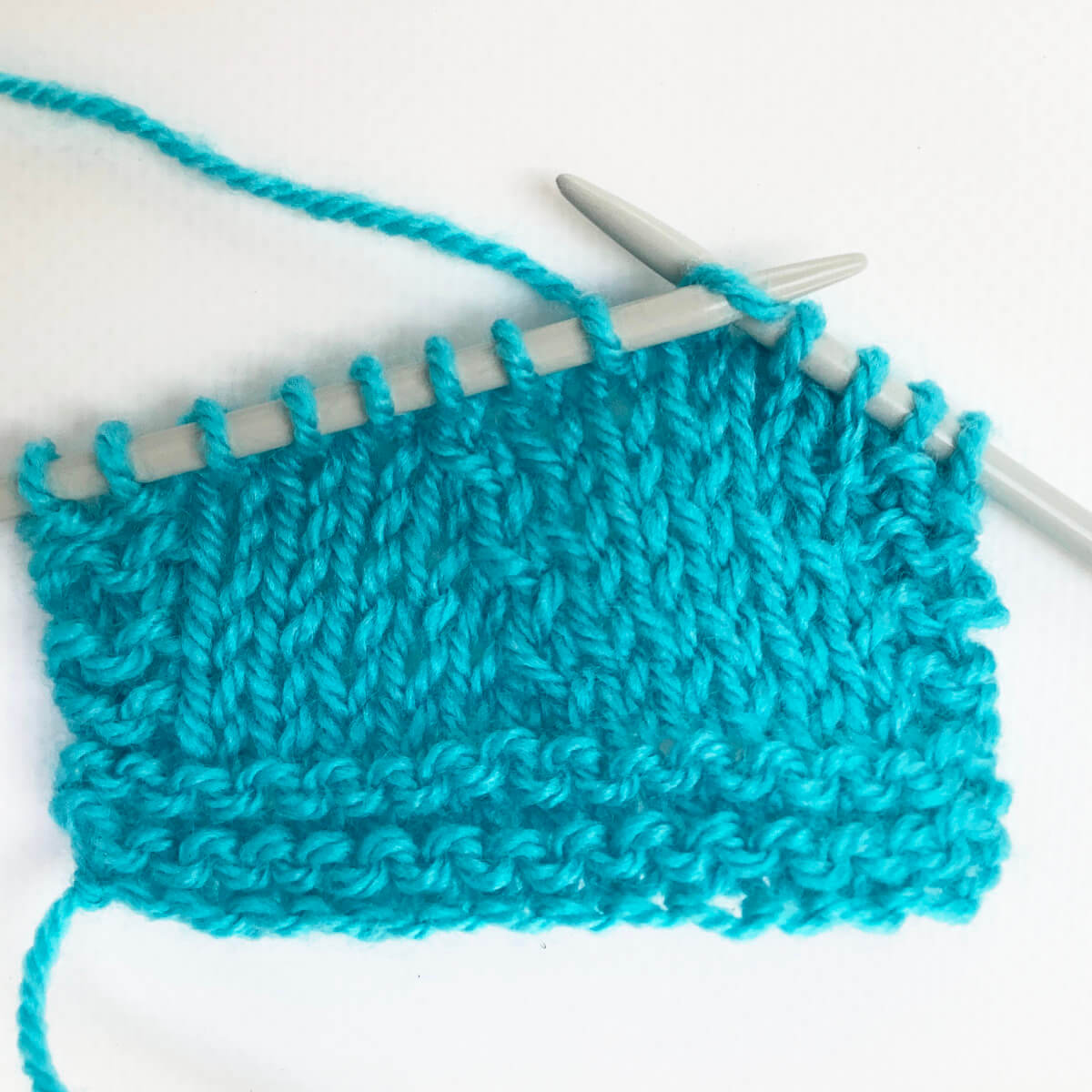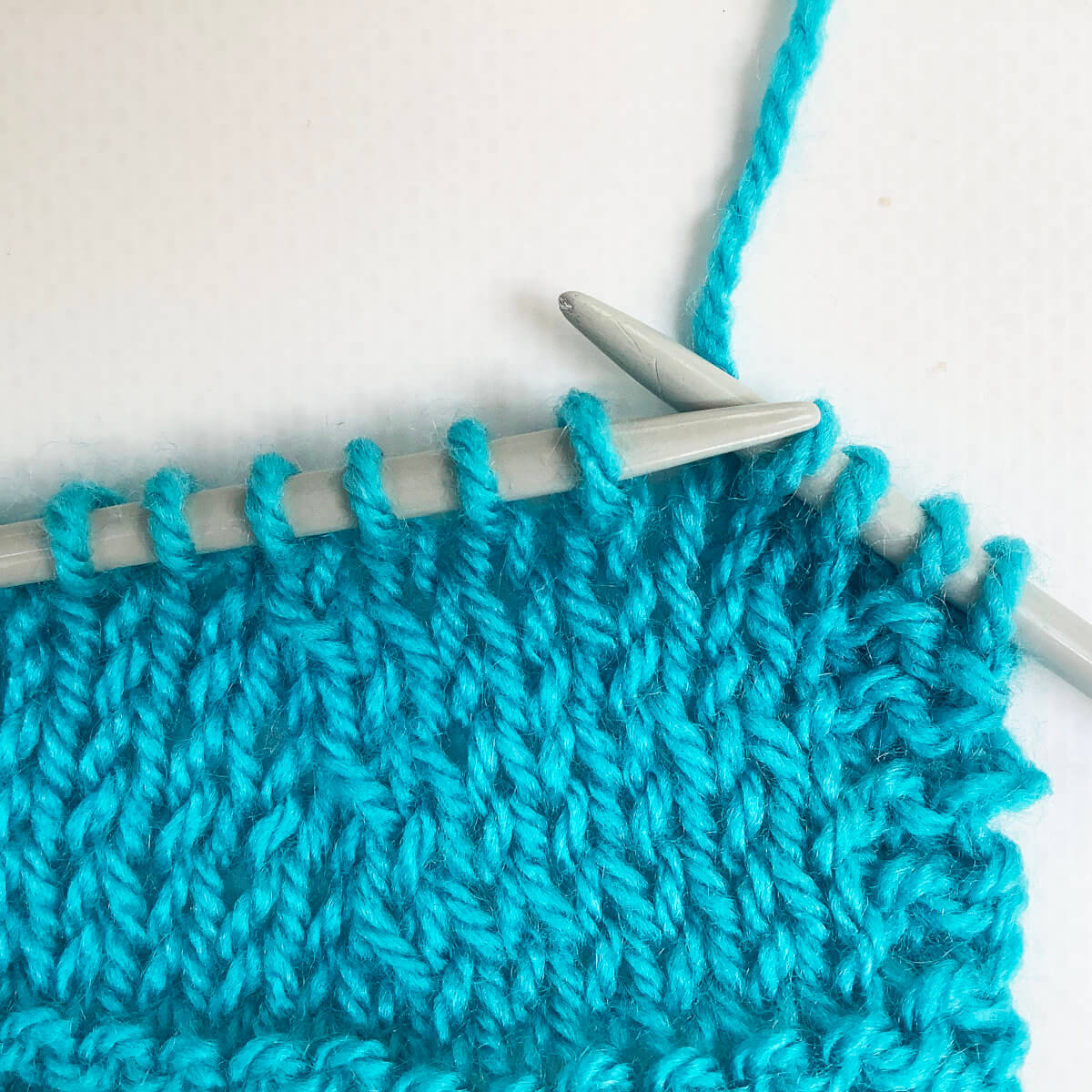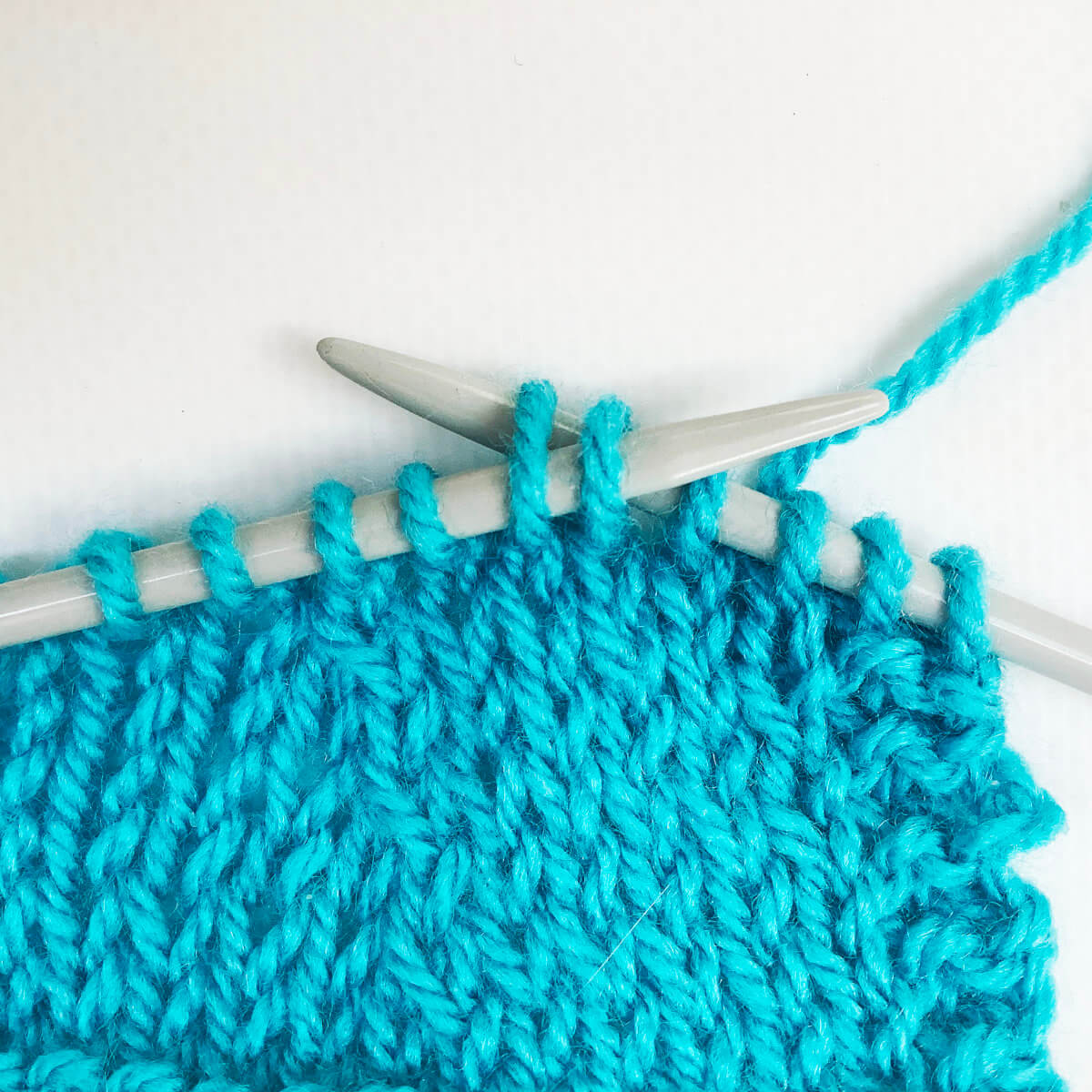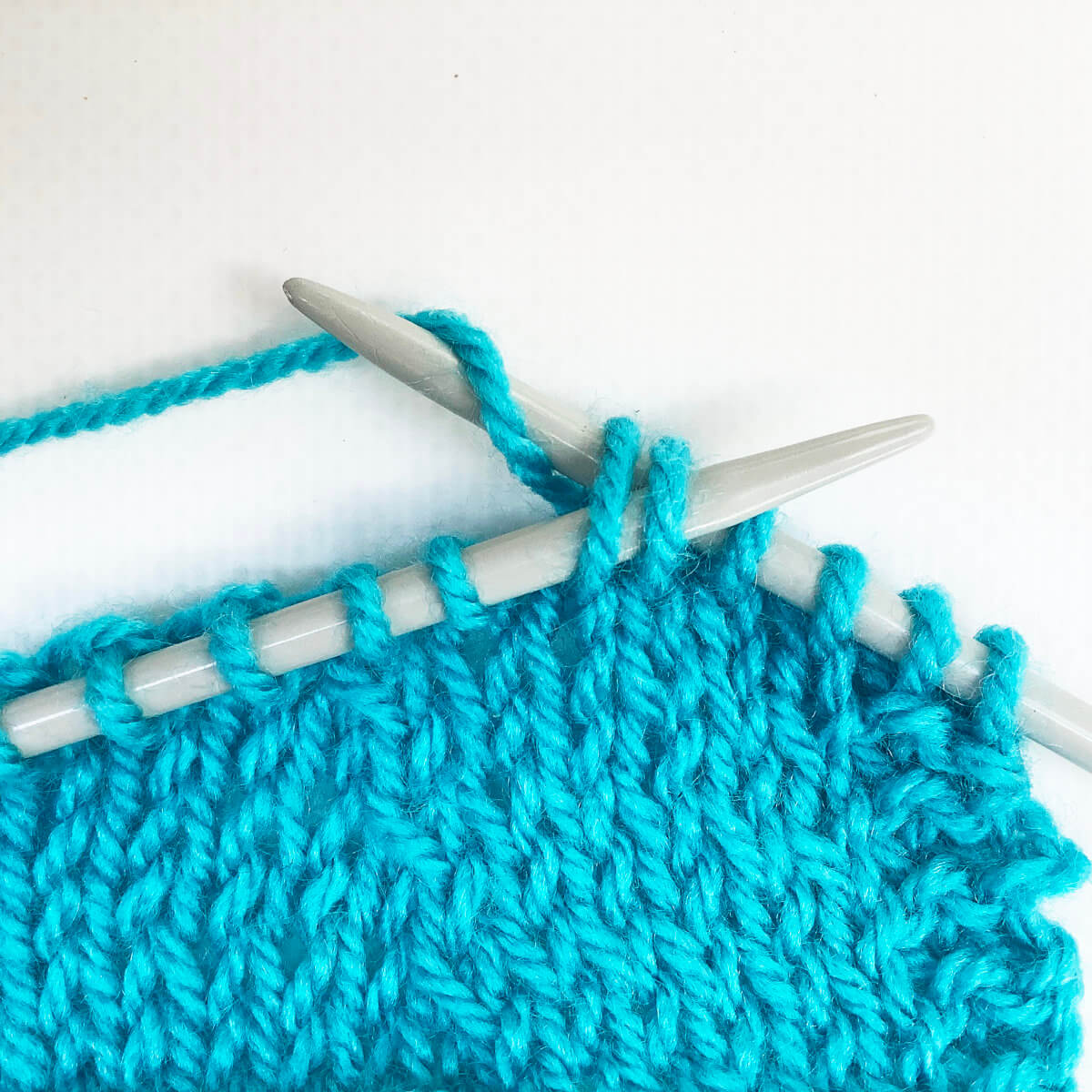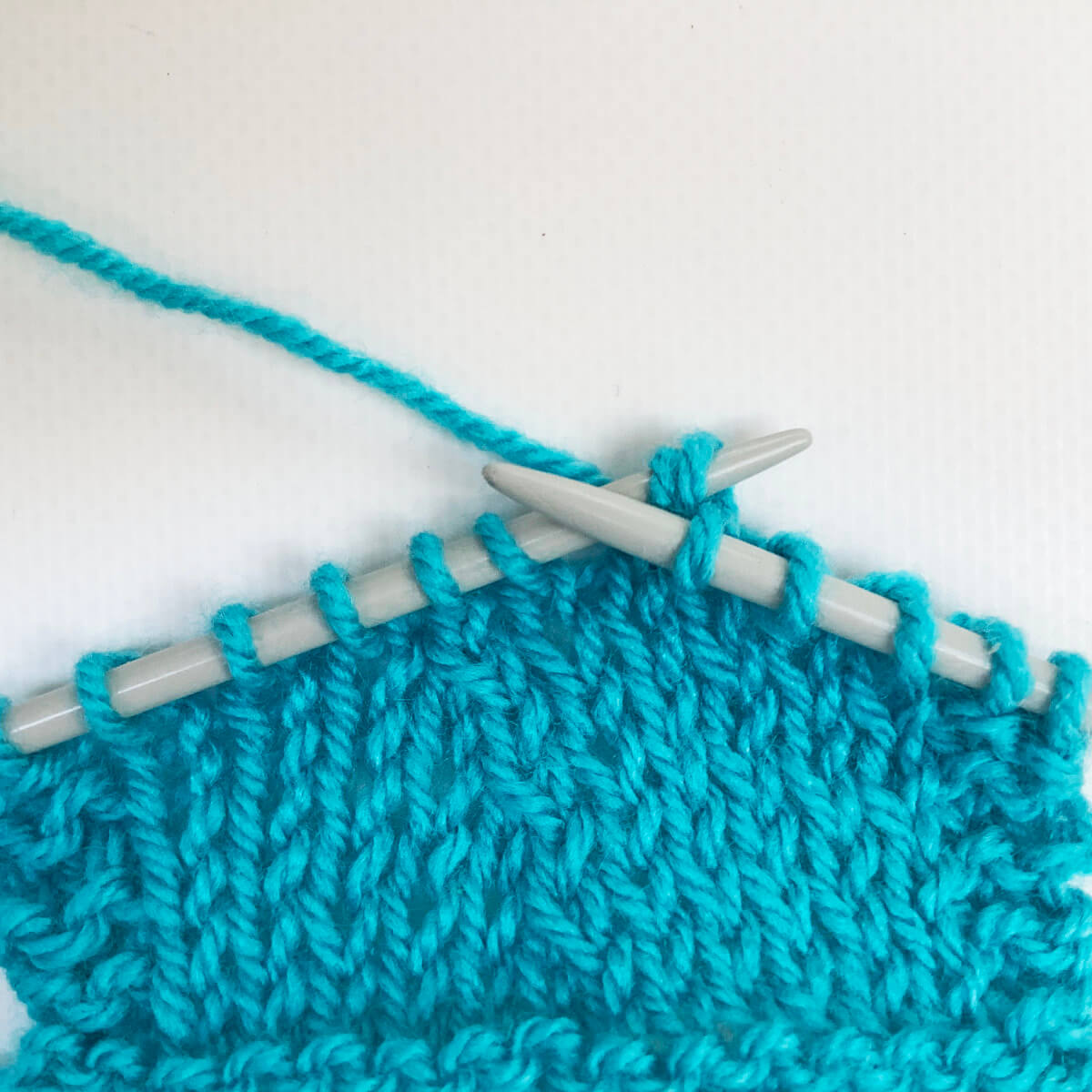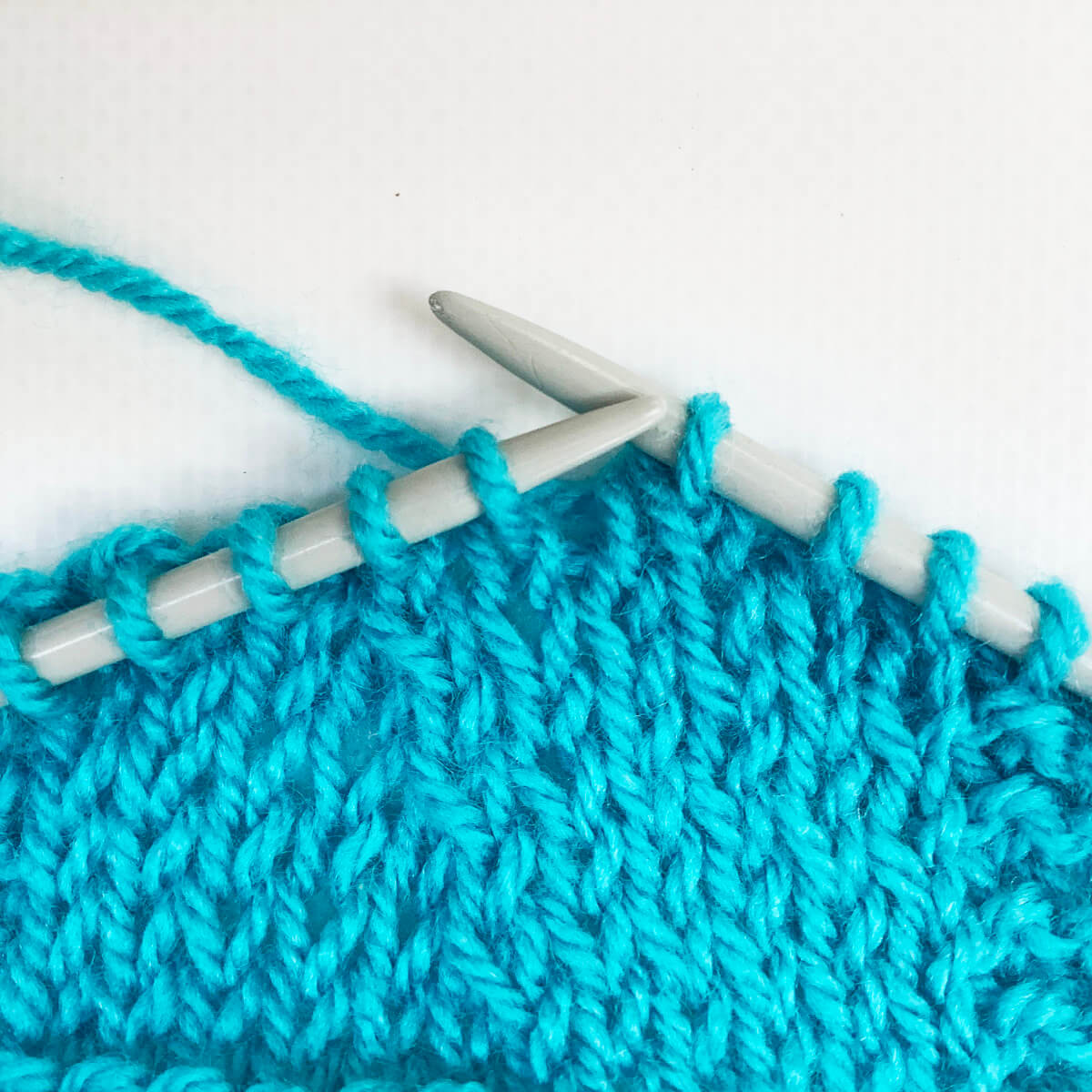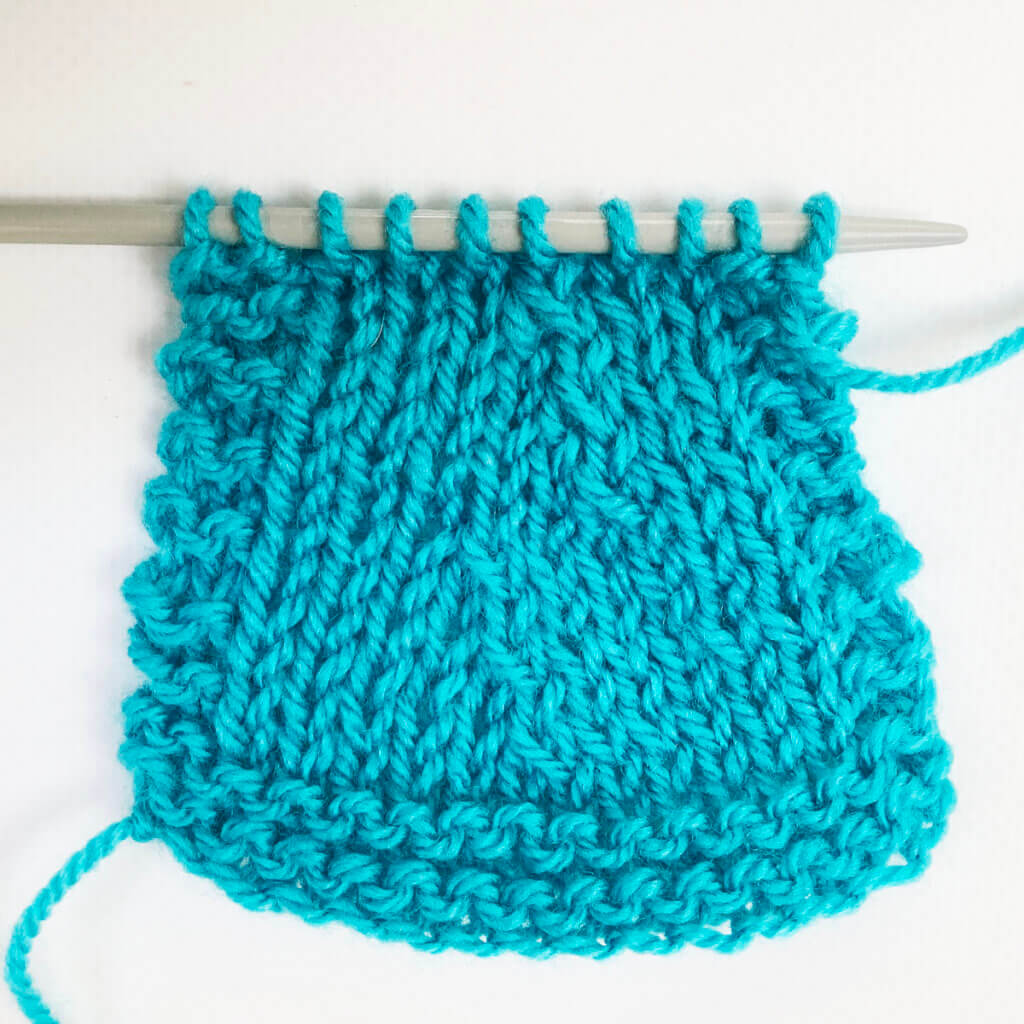stitch pattern – staggered eyelet stitch
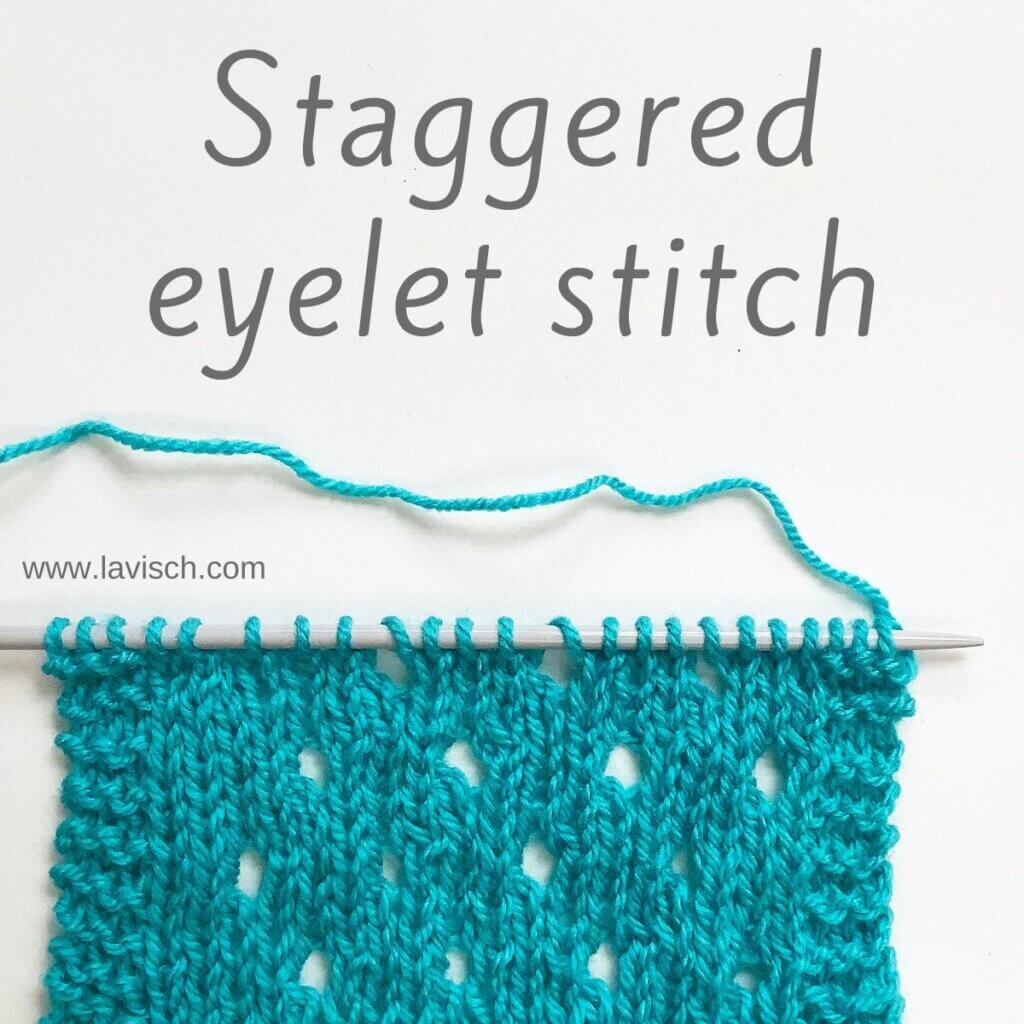
The staggered eyelet stitch consists of alternating eyelets on a stockinette background. It’s a quite simple stitch pattern, with a gorgeous effect when used all-over in a design. Especially if you don’t want to take away too much attention from the yarn. This stitch pattern is worked as a multiple of 4 stitches plus 2 stitches, and in an eight-row repeat. Please note that I’ve added 3 edge stitches in garter stitch on both sides of the swatch. These are not included in the stitch pattern description.
Materials used

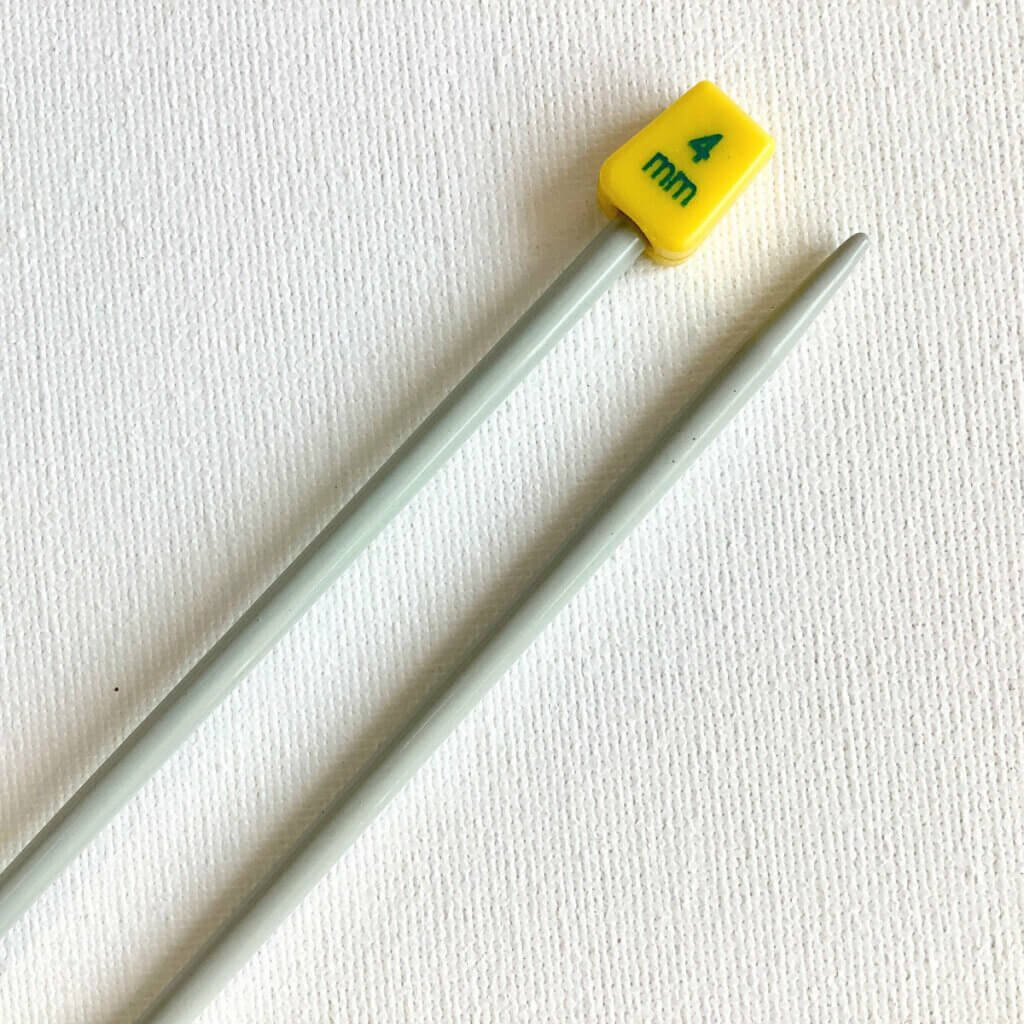
Yarn: Paintbox Yarns Simply DK, a good value, good quality 100% acrylic yarn, in the color Marine Blue.
Needles: This is a pair of straights that I picked up at the second-hand store when I started knitting, brand unknown.
Stitches used
- k – knit
- k2tog – knit 2 stitches together
- p – purl
- RS / WS – right side / wrong side
- rep – repeat
- st(s) – stitch(es)
- yo – yarn over
Staggered eyelet stitch
Row 1 (RS): Knit.
Row 2 and all following WS rows: Purl.
Row 3: K1, yo, k2tog, *k2, yo, k2tog; rep from * to 3 sts before end, k3.
Row 5: Knit.
Row 7: K3, *yo, k2tog, k2; rep from * to 3 sts before end, yo, k2tog, k1.
Repeat rows 1-8 for pattern until desired length.
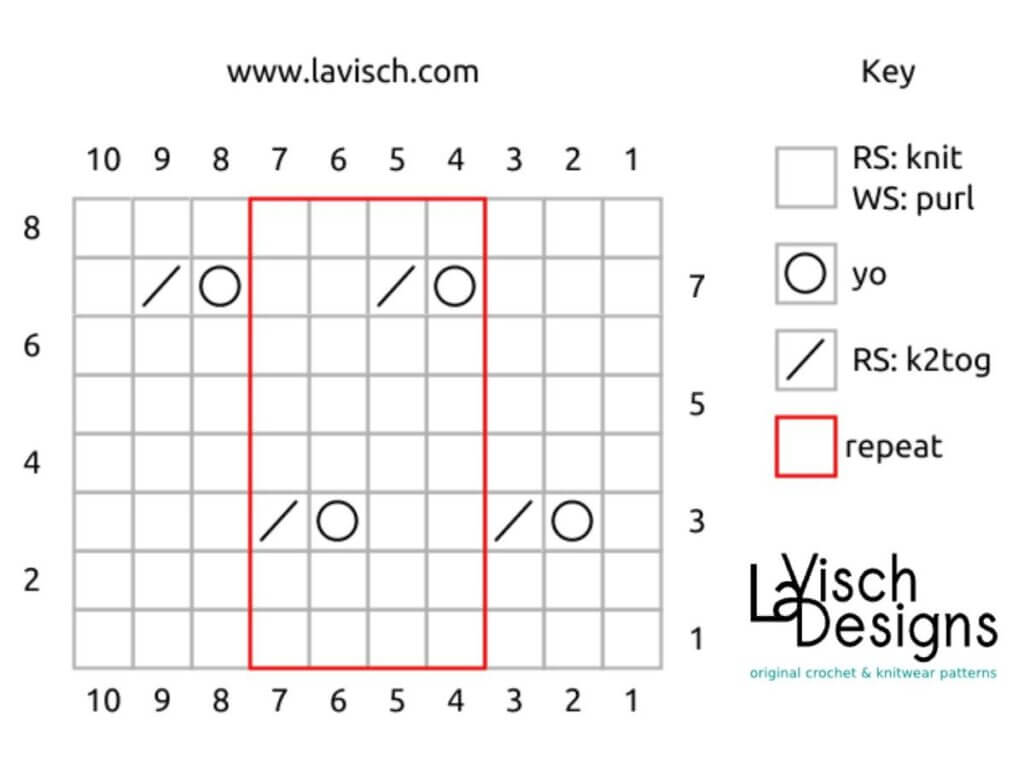
In the below pictures, you see the patterning first from the right, and then also from the wrong side of the fabric:
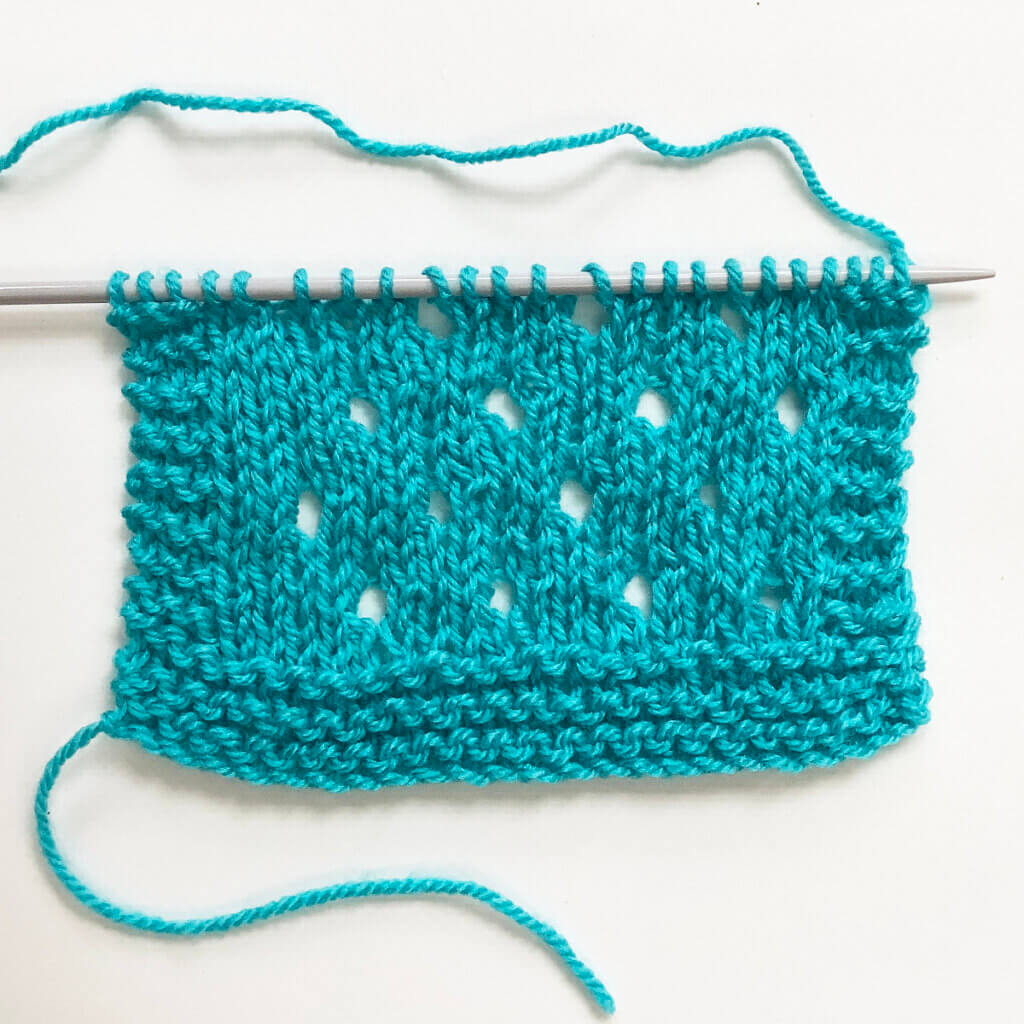
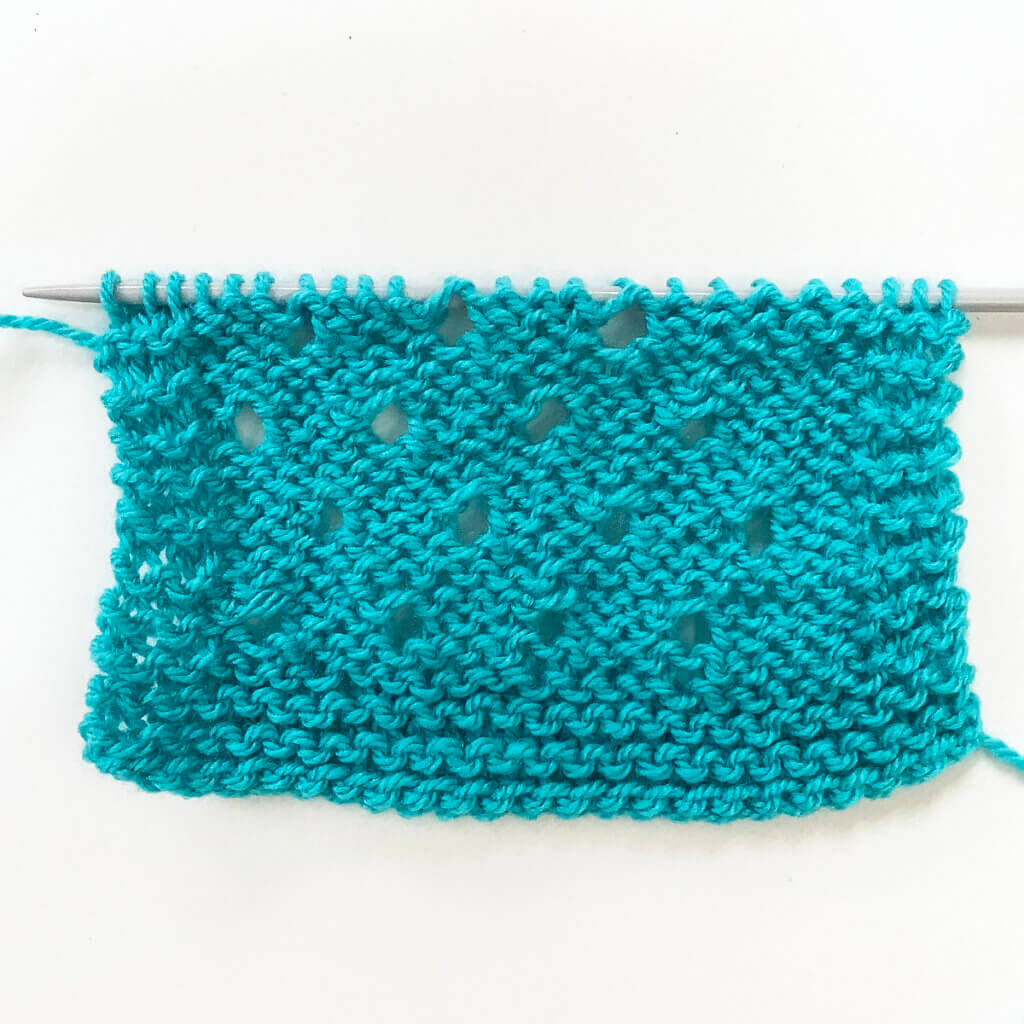

Thanks to my Patreon supporters for bringing you this freebie! Creating quality patterns and tutorials is a lot of work and resource-intensive. However, I find it important to give you free content like this tutorial. Thanks to the generous support of my Patreon supporters, I can make it happen. Thank you, patrons! Click here to join, or click here to read more about La Visch Designs on Patreon.
stitch pattern – staggered eyelet stitch Read More »

